

Photo Essay

We all know that photographs tell a story. These still images may be seen from various perspectives and are interpreted in different ways. Oftentimes, photographers like to give dramatic meaning to various scenarios. For instance, a blooming flower signifies a new life. Photographs always hold a deeper meaning than what they actually are.
In essay writing , photographs along with its supporting texts, play a significant role in conveying a message. Here are some examples of these kinds of photo-text combinations.
What is Photo Essay? A photo essay is a visual storytelling method that utilizes a sequence of carefully curated photographs to convey a narrative, explore a theme, or evoke specific emotions. It goes beyond individual images, aiming to tell a cohesive and impactful story through the arrangement and combination of pictures.
Photo Essay Format
A photo essay is a series of photographs that are intended to tell a story or evoke a series of emotions in the viewer. It is a powerful way to convey messages without the need for many words. Here is a format to guide you in creating an effective photo essay:
1. Choose a Compelling Topic
Select a subject that you are passionate about or that you find intriguing. Ensure the topic has a clear narrative that can be expressed visually.
2. Plan Your Shots
Outline the story you wish to tell. This could involve a beginning, middle, and end or a thematic approach. Decide on the types of shots you need (e.g., wide shots, close-ups, portraits, action shots) to best tell the story.
3. Take Your Photographs
Capture a variety of images to have a wide selection when editing your essay. Focus on images that convey emotion, tell a story, or highlight your theme.
4. Edit Your Photos
Select the strongest images that best convey your message or story. Edit for consistency in style, color, and lighting to ensure the essay flows smoothly.
5. Arrange Your Photos
Order your images in a way that makes sense narratively or thematically. Consider transitions between photos to ensure they lead the viewer naturally through the story.
6. Include Captions or Text (Optional)
Write captions to provide context, add depth, or explain the significance of each photo. Keep text concise and impactful, letting the images remain the focus.
7. Present Your Photo Essay
Choose a platform for presentation, whether online, in a gallery, or as a printed booklet. Consider the layout and design, ensuring that it complements and enhances the visual narrative.
8. Conclude with Impact
End with a strong image or a conclusion that encapsulates the essence of your essay. Leave the viewer with something to ponder , reflecting on the message or emotions you aimed to convey.
Best Photo Essay Example?
One notable example of a powerful photo essay is “The Photographic Essay: Paul Fusco’s ‘RFK Funeral Train'” by Paul Fusco. This photo essay captures the emotional journey of the train carrying the body of Robert F. Kennedy from New York to Washington, D.C., after his assassination in 1968. Fusco’s images beautifully and poignantly document the mourning and respect shown by people along the train route. The series is a moving portrayal of grief, unity, and the impact of a historical moment on the lives of ordinary individuals. The photographs are both artistically compelling and deeply human, making it a notable example of the potential for photo essays to convey complex emotions and historical narratives.
Photo Essay Examples and Ideas to Edit & Download
- A Day in the Life Photo Essay
- Behind the scenes Photo Essay
- Event Photo Essay
- Photo Essay on Meal
- Photo Essay on Photo walking
- Photo Essay on Protest
- Photo Essay on Abandoned building
- Education photo essay
- Photo Essay on Events
- Follow the change Photo Essay
- Photo Essay on Personal experiences
Photo Essay Examples & Templates
1. narrative photo essay format example.

nytimes.com
2. Student Photo Essay Example

3. Great Depression Essay Example

thshistory.files.wordpress.com
4. Example of Photo Essay

weresearchit.co.uk
5. Photo Essay Examples About Nature

cge-media-library.s3.ca-central-1.amazonaws.com
6. Travel Photo Example

theguardian.com
7. Free Photo Essay Example

vasantvalley.org
Most Interesting Photo Essays of 2019
Now that you are educated with the fundamentals of photo essays, why not lay eyes on some great photo essays for inspiration. To give you a glimpse of a few epitomes, we collected the best and fascinating photo essays for you. The handpicked samples are as follows:
8. Toys and Us

journals.openedition.org
This photo essay presents its subject which is the latest genre of photography, toy photography. In this type of picture taking, the photographer aims to give life on the toys and treat them as his/her model. This photography follows the idea of a toy researcher, Katrina Heljakka, who states that also adults and not only children are interested in reimagining and preserving the characters of their toys with the means of roleplay and creating a story about these toys. This photo essay is based on the self-reflection of the author on a friend’s toys in their home environment.
9. The Faces of Nature Example

godandnature.asa3.org
This photo essay and collection caters the creativity of the author’s mind in seeing the world. In her composition, she justified that there are millions of faces that are naturally made that some of us have not noticed. She also presented tons of photos showing different natural objects that form patterns of faces. Though it was not mentioned in the essay itself, the author has unconsciously showcased the psychological phenomenon, pareidolia. This is the tendency to translate an obscure stimulus that let the observer see faces in inanimate objects or abstract patterns, or even hearing concealed messages in music.
10. The Country Doctor Example

us1.campaign-archive.com
This photo essay depicts the medical hardships in a small rural town in Colorado called Kremling. For 23 days, Smith shadowed Dr. Ernest Ceriani, witnessing the dramatic life of the small town and capturing the woeful crisis of the region. The picture in this photographic essay was photographed by Smith himself for Life magazine in 1948 but remained as fascinating as it was posted weeks ago.
11. New York City Coffeehouses

lens.blogs.nytimes.com
Café Latte, cappuccino, espresso, or flat white—of course, you know these if you have visited a coffee shop at least once. However, the photographer of this photo essay took it to a whole new level of experience. Within two to three days of visiting various coffee places, Mr. Gavrysh stayed most of his day observing at the finest details such as the source of the coffee, the procedure of delivering them, and the process of roasting and grounding them. He also watched how did the baristas perfect the drinks and the reaction of the customers as they received their ordered coffee with delights in their faces. Gavrysh did not mean to compose a coffeehouse guide, but to make a composition that describes modern, local places where coffee is sipped and treated with respect.
12. Hungry Planet: What The World Eats

13. Photo Essay Example

cah.utexas.edu
14. Photo Essay in PDF

condor.depaul.edu
15. Sample Photo Essay Example

colorado.edu
16. Basic Photo Essay Example

adaptation-undp.org
17. Printable Photo Essay Example

One of the basic necessity of a person to live according to his/her will is food. In this photo essay, you will see how these necessities vary in several ways. In 2005, a pair of Peter Menzel and Faith D’ Aluisio released a book that showcased the meals of an average family in 24 countries. Ecuador, south-central Mali, China, Mexico, Kuwait, Norway, and Greenland are among the nations they visited. This photo essay is written to raise awareness about the influence of environment and culture to the cost and calories of the foods laid on the various dining tables across the globe.
Photo essays are not just about photographic aesthetics but also the stories that authors built behind those pictures. In this collection of captivating photo essays, reflect on how to write your own. If you are allured and still can’t get enough, there’s no need for you to be frantic about. Besides, there are thousands of samples and templates on our website to browse. Visit us to check them all out.
What are good topics for a photo essay?
- Urban Exploration: Document the unique architecture, street life, and cultural diversity of urban environments.
- Environmental Conservation: Capture the beauty of natural landscapes or document environmental issues, showcasing the impact of climate change or conservation efforts.
- Everyday Life in Your Community: Showcase the daily lives, traditions, and activities of people in your local community.
- Family Traditions: Document the customs, rituals, and special moments within your own family or another family.
- Youth Culture: Explore the lifestyle, challenges, and aspirations of young people in your community or around the world.
- Behind-the-Scenes at an Event: Provide a backstage look at the preparation and execution of an event, such as a concert, festival, or sports competition.
- A Day in the Life of a Profession: Follow a professional in their daily activities, offering insights into their work, challenges, and routines.
- Social Issues: Address important social issues like homelessness, poverty, immigration, or healthcare, raising awareness through visual storytelling.
- Cultural Celebrations: Document cultural festivals, ceremonies, or celebrations that showcase the diversity of traditions in your region or beyond.
- Education Around the World: Explore the various facets of education globally, from classrooms to the challenges students face in different cultures.
- Workplace Dynamics: Capture the atmosphere, interactions, and diversity within different workplaces or industries.
- Street Art and Graffiti: Document the vibrant and dynamic world of street art, capturing the expressions of local artists.
- Animal Rescues or Shelters: Focus on the efforts of organizations or individuals dedicated to rescuing and caring for animals.
- Migration Stories: Explore the experiences and challenges of individuals or communities affected by migration.
- Global Food Culture: Document the diversity of food cultures, from local markets to family meals, showcasing the role of food in different societies.
How to Write a Photo Essay
First of all, you would need to find a topic that you are interested in. With this, you can conduct thorough research on the topic that goes beyond what is common. This would mean that it would be necessary to look for facts that not a lot of people know about. Not only will this make your essay interesting, but this may also help you capture the necessary elements for your images.
Remember, the ability to manipulate the emotions of your audience will allow you to build a strong connection with them. Knowing this, you need to plan out your shots. With the different emotions and concepts in mind, your images should tell a story along with the essay outline .
1. Choose Your Topic
- Select a compelling subject that interests you and can be explored visually.
- Consider the story or message you want to convey. It should be something that can be expressed through images.
2. Plan Your Essay
- Outline your narrative. Decide if your photo essay will tell a story with a beginning, middle, and end, or if it will explore a theme or concept.
- Research your subject if necessary, especially if you’re covering a complex or unfamiliar topic.
3. Capture Your Images
- Take a variety of photos. Include wide shots to establish the setting, close-ups to show details, and medium shots to focus on subjects.
- Consider different angles and perspectives to add depth and interest to your essay.
- Shoot more than you need. Having a large selection of images to choose from will make the editing process easier.
4. Select Your Images
- Choose photos that best tell your story or convey your theme.
- Look for images that evoke emotion or provoke thought.
- Ensure there’s a mix of compositions to keep the viewer engaged.
- Sequence your images in a way that makes narrative or thematic sense.
- Consider the flow and how each image transitions to the next.
- Use juxtaposition to highlight contrasts or similarities.
6. Add Captions or Text (Optional)
- Write captions to provide context or additional information about each photo. Keep them brief and impactful.
- Consider including an introduction or conclusion to frame your essay. This can be helpful in setting the stage or offering a final reflection.
7. Edit and Refine
- Review the sequence of your photos. Make sure they flow smoothly and clearly convey your intended story or theme.
- Adjust the layout as needed, ensuring that the visual arrangement is aesthetically pleasing and supports the narrative.
8. Share Your Essay
- Choose the right platform for your photo essay, whether it’s a blog, online publication, exhibition, or print.
- Consider your audience and tailor the presentation of your essay to suit their preferences and expectations.
Types of Photo Essay
Photo essays are a compelling medium to tell a story, convey emotions, or present a perspective through a series of photographs. Understanding the different types of photo essays can help photographers and storytellers choose the best approach for their project. Here are the main types of photo essays:
1. Narrative Photo Essays
- Purpose: To tell a story or narrate an event in a chronological sequence.
- Characteristics: Follows a clear storyline with a beginning, middle, and end. It often includes characters, a setting, and a plot.
- Examples: A day in the life of a firefighter, the process of crafting traditional pottery.
2. Thematic Photo Essays
- Purpose: To explore a specific theme, concept, or issue without being bound to a chronological sequence.
- Characteristics: Centers around a unified theme, with each photo contributing to the overall concept.
- Examples: The impact of urbanization on the environment, the beauty of natural landscapes.
3. Conceptual Photo Essays
- Purpose: To convey an idea or evoke a series of emotions through abstract or metaphorical images.
- Characteristics: Focuses on delivering a conceptual message or emotional response, often using symbolism.
- Examples: Loneliness in the digital age, the concept of freedom.
4. Expository or Informative Photo Essays
- Purpose: To inform or educate the viewer about a subject with a neutral viewpoint.
- Characteristics: Presents factual information on a topic, often accompanied by captions or brief texts to provide context.
- Examples: The process of coffee production, a day at an animal rescue center.
5. Persuasive Photo Essays
- Purpose: To convince the viewer of a particular viewpoint or to highlight social issues.
- Characteristics: Designed to persuade or elicit action, these essays may focus on social, environmental, or political issues.
- Examples: The effects of plastic pollution, the importance of historical preservation.
6. Personal Photo Essays
- Purpose: To express the photographer’s personal experiences, emotions, or journeys.
- Characteristics: Highly subjective and personal, often reflecting the photographer’s intimate feelings or experiences.
- Examples: A personal journey through grief, documenting one’s own home during quarantine.
7. Environmental Photo Essays
- Purpose: To showcase landscapes, wildlife, and environmental issues.
- Characteristics: Focuses on the natural world or environmental challenges, aiming to raise awareness or appreciation.
- Examples: The melting ice caps, wildlife in urban settings.
8. Travel Photo Essays
- Purpose: To explore and present the culture, landscapes, people, and experiences of different places.
- Characteristics: Captures the essence of a location, showcasing its uniqueness and the experiences of traveling.
- Examples: A road trip across the American Southwest, the vibrant streets of a bustling city.
How do you start a picture essay?
1. choose a compelling theme or topic:.
Select a theme or topic that resonates with you and has visual storytelling potential. It could be a personal project, an exploration of a social issue, or a visual journey through a specific place or event.
2. Research and Conceptualize:
Conduct research on your chosen theme to understand its nuances, context, and potential visual elements. Develop a conceptual framework for your photo essay, outlining the key aspects you want to capture.
3. Define Your Storytelling Approach:
Determine how you want to convey your narrative. Consider whether your photo essay will follow a chronological sequence, a thematic structure, or a more abstract and conceptual approach.
4. Create a Shot List:
Develop a list of specific shots you want to include in your essay. This can help guide your photography and ensure you capture a diverse range of images that contribute to your overall narrative.
5. Plan the Introduction:
Think about how you want to introduce your photo essay. The first image or series of images should grab the viewer’s attention and set the tone for the narrative.
6. Consider the Flow:
Plan the flow of your photo essay, ensuring a logical progression of images that tells a cohesive and engaging story. Consider the emotional impact and visual variety as you sequence your photographs.
7. Shoot with Purpose:
Start capturing images with your conceptual framework in mind. Focus on images that align with your theme and contribute to the overall narrative. Look for moments that convey emotion, tell a story, or reveal aspects of your chosen subject.
8. Experiment with Perspectives and Techniques:
Explore different perspectives, compositions, and photographic techniques to add visual interest and depth to your essay. Consider using a variety of shots, including wide-angle, close-ups, and detail shots.
9. Write Descriptive Captions:
As you capture images, think about the accompanying captions. Captions should provide context, additional information, or insights that enhance the viewer’s understanding of each photograph.
What are the key elements of a photo essay?
1. Theme or Topic:
Clearly defined subject matter or theme that unifies the photographs and tells a cohesive story.
2. Narrative Structure:
An intentional narrative structure that guides the viewer through the photo essay, whether chronological, thematic, or conceptual.
3. Introduction:
A strong introduction that captures the viewer’s attention and sets the tone for the photo essay.
4. Captivating Images:
A series of high-quality and visually compelling images that effectively convey the chosen theme or story.
5. Variety of Shots:
A variety of shots, including wide-angle, close-ups, detail shots, and different perspectives, to add visual interest and depth.
6. Sequencing:
Careful sequencing of images to create a logical flow and emotional impact, guiding the viewer through the narrative.
7. Captions and Text:
Thoughtful captions or accompanying text that provide context, additional information, or insights, enhancing the viewer’s understanding.
8. Conclusion:
A concluding section that brings the photo essay to a satisfying close, leaving a lasting impression on the viewer.
Purpose of a Photo Essay
With good writing skills , a person is able to tell a story through words. However, adding images for your essay will give it the dramatic effect it needs. The photographs and the text work hand in hand to create something compelling enough to attract an audience.
This connection goes beyond something visual, as photo essays are also able to connect with an audience emotionally. This is to create an essay that is effective enough to relay a given message.
5 Tips for Creating a Photo Essay
- Don’t be afraid to experiment. Find the right angle and be dramatic with your description, just be creative.
- Pay attention to detail. Chances are, your audience will notice every single detail of your photograph.
- Shoot everything. Behind a single beautiful photo is a hundred more shots.
- Don’t think twice about editing. Editing is where the magic happens. It has the ability to add more drama to your images.
- Have fun. Don’t stress yourself out too much but instead, grow from your experience.
What is a photo essay for school?
A school photo essay is a visual storytelling project for educational purposes, typically assigned to students. It involves creating a narrative using a series of carefully curated photographs on a chosen theme.
How many pictures should be in a photo essay?
The number of pictures in a photo essay varies based on the chosen theme and narrative structure. It can range from a few impactful images to a more extensive series, typically around 10-20 photographs.
Is a photo essay a story?
Yes, a photo essay is a visual storytelling form. It uses a series of carefully curated photographs to convey a narrative, evoke emotions, or communicate a specific message or theme.
What makes a photo essay unforgettable?
An unforgettable photo essay is characterized by a powerful theme, emotionally resonant images, a well-crafted narrative structure, attention to detail, and a connection that leaves a lasting impact on viewers.
Photo Essay Generator
Text prompt
- Instructive
- Professional
Create a Photo Essay on the theme of urban exploration.
Discuss the story of a local community event through a Photo Essay.
The leading authority in photography and camera gear.
Become a better photographer.
12.9 Million
Annual Readers
Newsletter Subscribers
Featured Photographers
Photography Guides & Gear Reviews

How to Create an Engaging Photo Essay (with Examples)
Photo essays tell a story in pictures. They're a great way to improve at photography and story-telling skills at once. Learn how to do create a great one.
Learn | Photography Guides | By Ana Mireles
Photography is a medium used to tell stories – sometimes they are told in one picture, sometimes you need a whole series. Those series can be photo essays.
If you’ve never done a photo essay before, or you’re simply struggling to find your next project, this article will be of help. I’ll be showing you what a photo essay is and how to go about doing one.
You’ll also find plenty of photo essay ideas and some famous photo essay examples from recent times that will serve you as inspiration.
If you’re ready to get started, let’s jump right in!
Table of Contents
What is a Photo Essay?
A photo essay is a series of images that share an overarching theme as well as a visual and technical coherence to tell a story. Some people refer to a photo essay as a photo series or a photo story – this often happens in photography competitions.
Photographic history is full of famous photo essays. Think about The Great Depression by Dorothea Lange, Like Brother Like Sister by Wolfgang Tillmans, Gandhi’s funeral by Henri Cartier Bresson, amongst others.
What are the types of photo essay?
Despite popular belief, the type of photo essay doesn’t depend on the type of photography that you do – in other words, journalism, documentary, fine art, or any other photographic genre is not a type of photo essay.
Instead, there are two main types of photo essays: narrative and thematic .
As you have probably already guessed, the thematic one presents images pulled together by a topic – for example, global warming. The images can be about animals and nature as well as natural disasters devastating cities. They can happen all over the world or in the same location, and they can be captured in different moments in time – there’s a lot of flexibility.
A narrative photo essa y, on the other hand, tells the story of a character (human or not), portraying a place or an event. For example, a narrative photo essay on coffee would document the process from the planting and harvesting – to the roasting and grinding until it reaches your morning cup.
What are some of the key elements of a photo essay?
- Tell a unique story – A unique story doesn’t mean that you have to photograph something that nobody has done before – that would be almost impossible! It means that you should consider what you’re bringing to the table on a particular topic.
- Put yourself into the work – One of the best ways to make a compelling photo essay is by adding your point of view, which can only be done with your life experiences and the way you see the world.
- Add depth to the concept – The best photo essays are the ones that go past the obvious and dig deeper in the story, going behind the scenes, or examining a day in the life of the subject matter – that’s what pulls in the spectator.
- Nail the technique – Even if the concept and the story are the most important part of a photo essay, it won’t have the same success if it’s poorly executed.
- Build a structure – A photo essay is about telling a thought-provoking story – so, think about it in a narrative way. Which images are going to introduce the topic? Which ones represent a climax? How is it going to end – how do you want the viewer to feel after seeing your photo series?
- Make strong choices – If you really want to convey an emotion and a unique point of view, you’re going to need to make some hard decisions. Which light are you using? Which lens? How many images will there be in the series? etc., and most importantly for a great photo essay is the why behind those choices.
9 Tips for Creating a Photo Essay

Credit: Laura James
1. Choose something you know
To make a good photo essay, you don’t need to travel to an exotic location or document a civil war – I mean, it’s great if you can, but you can start close to home.
Depending on the type of photography you do and the topic you’re looking for in your photographic essay, you can photograph a local event or visit an abandoned building outside your town.
It will be much easier for you to find a unique perspective and tell a better story if you’re already familiar with the subject. Also, consider that you might have to return a few times to the same location to get all the photos you need.
2. Follow your passion
Most photo essays take dedication and passion. If you choose a subject that might be easy, but you’re not really into it – the results won’t be as exciting. Taking photos will always be easier and more fun if you’re covering something you’re passionate about.
3. Take your time
A great photo essay is not done in a few hours. You need to put in the time to research it, conceptualizing it, editing, etc. That’s why I previously recommended following your passion because it takes a lot of dedication, and if you’re not passionate about it – it’s difficult to push through.
4. Write a summary or statement
Photo essays are always accompanied by some text. You can do this in the form of an introduction, write captions for each photo or write it as a conclusion. That’s up to you and how you want to present the work.
5. Learn from the masters
How Much Do You REALLY Know About Photography?! 🤔
Test your photography knowledge with this quick quiz!
See how much you really know about photography...

Your answer:
Correct answer:
SHARE YOUR RESULTS
Your Answers
Making a photographic essay takes a lot of practice and knowledge. A great way to become a better photographer and improve your storytelling skills is by studying the work of others. You can go to art shows, review books and magazines and look at the winners in photo contests – most of the time, there’s a category for photo series.
6. Get a wide variety of photos
Think about a story – a literary one. It usually tells you where the story is happening, who is the main character, and it gives you a few details to make you engage with it, right?
The same thing happens with a visual story in a photo essay – you can do some wide-angle shots to establish the scenes and some close-ups to show the details. Make a shot list to ensure you cover all the different angles.
Some of your pictures should guide the viewer in, while others are more climatic and regard the experience they are taking out of your photos.
7. Follow a consistent look
Both in style and aesthetics, all the images in your series need to be coherent. You can achieve this in different ways, from the choice of lighting, the mood, the post-processing, etc.
8. Be self-critical
Once you have all the photos, make sure you edit them with a good dose of self-criticism. Not all the pictures that you took belong in the photo essay. Choose only the best ones and make sure they tell the full story.
9. Ask for constructive feedback
Often, when we’re working on a photo essay project for a long time, everything makes perfect sense in our heads. However, someone outside the project might not be getting the idea. It’s important that you get honest and constructive criticism to improve your photography.
How to Create a Photo Essay in 5 Steps

Credit: Quang Nguyen Vinh
1. Choose your topic
This is the first step that you need to take to decide if your photo essay is going to be narrative or thematic. Then, choose what is it going to be about?
Ideally, it should be something that you’re interested in, that you have something to say about it, and it can connect with other people.
2. Research your topic
To tell a good story about something, you need to be familiar with that something. This is especially true when you want to go deeper and make a compelling photo essay. Day in the life photo essays are a popular choice, since often, these can be performed with friends and family, whom you already should know well.
3. Plan your photoshoot
Depending on what you’re photographing, this step can be very different from one project to the next. For a fine art project, you might need to find a location, props, models, a shot list, etc., while a documentary photo essay is about planning the best time to do the photos, what gear to bring with you, finding a local guide, etc.
Every photo essay will need different planning, so before taking pictures, put in the required time to get things right.
4. Experiment
It’s one thing to plan your photo shoot and having a shot list that you have to get, or else the photo essay won’t be complete. It’s another thing to miss out on some amazing photo opportunities that you couldn’t foresee.
So, be prepared but also stay open-minded and experiment with different settings, different perspectives, etc.
5. Make a final selection
Editing your work can be one of the hardest parts of doing a photo essay. Sometimes we can be overly critical, and others, we get attached to bad photos because we put a lot of effort into them or we had a great time doing them.
Try to be as objective as possible, don’t be afraid to ask for opinions and make various revisions before settling down on a final cut.
7 Photo Essay Topics, Ideas & Examples

Credit: Michelle Leman
- Architectural photo essay
Using architecture as your main subject, there are tons of photo essay ideas that you can do. For some inspiration, you can check out the work of Francisco Marin – who was trained as an architect and then turned to photography to “explore a different way to perceive things”.
You can also lookup Luisa Lambri. Amongst her series, you’ll find many photo essay examples in which architecture is the subject she uses to explore the relationship between photography and space.
- Process and transformation photo essay
This is one of the best photo essay topics for beginners because the story tells itself. Pick something that has a beginning and an end, for example, pregnancy, the metamorphosis of a butterfly, the life-cycle of a plant, etc.
Keep in mind that these topics are linear and give you an easy way into the narrative flow – however, it might be difficult to find an interesting perspective and a unique point of view.
- A day in the life of ‘X’ photo essay
There are tons of interesting photo essay ideas in this category – you can follow around a celebrity, a worker, your child, etc. You don’t even have to do it about a human subject – think about doing a photo essay about a day in the life of a racing horse, for example – find something that’s interesting for you.
- Time passing by photo essay
It can be a natural site or a landmark photo essay – whatever is close to you will work best as you’ll need to come back multiple times to capture time passing by. For example, how this place changes throughout the seasons or maybe even over the years.
A fun option if you live with family is to document a birthday party each year, seeing how the subject changes over time. This can be combined with a transformation essay or sorts, documenting the changes in interpersonal relationships over time.
- Travel photo essay
Do you want to make the jump from tourist snapshots into a travel photo essay? Research the place you’re going to be travelling to. Then, choose a topic.
If you’re having trouble with how to do this, check out any travel magazine – National Geographic, for example. They won’t do a generic article about Texas – they do an article about the beach life on the Texas Gulf Coast and another one about the diverse flavors of Texas.
The more specific you get, the deeper you can go with the story.
- Socio-political issues photo essay
This is one of the most popular photo essay examples – it falls under the category of photojournalism or documental photography. They are usually thematic, although it’s also possible to do a narrative one.
Depending on your topic of interest, you can choose topics that involve nature – for example, document the effects of global warming. Another idea is to photograph protests or make an education photo essay.
It doesn’t have to be a big global issue; you can choose something specific to your community – are there too many stray dogs? Make a photo essay about a local animal shelter. The topics are endless.
- Behind the scenes photo essay
A behind-the-scenes always make for a good photo story – people are curious to know what happens and how everything comes together before a show.
Depending on your own interests, this can be a photo essay about a fashion show, a theatre play, a concert, and so on. You’ll probably need to get some permissions, though, not only to shoot but also to showcase or publish those images.
4 Best Photo Essays in Recent times
Now that you know all the techniques about it, it might be helpful to look at some photo essay examples to see how you can put the concept into practice. Here are some famous photo essays from recent times to give you some inspiration.
Habibi by Antonio Faccilongo
This photo essay wan the World Press Photo Story of the Year in 2021. Faccilongo explores a very big conflict from a very specific and intimate point of view – how the Israeli-Palestinian war affects the families.
He chose to use a square format because it allows him to give order to things and eliminate unnecessary elements in his pictures.
With this long-term photo essay, he wanted to highlight the sense of absence and melancholy women and families feel towards their husbands away at war.
The project then became a book edited by Sarah Leen and the graphics of Ramon Pez.

Picture This: New Orleans by Mary Ellen Mark
The last assignment before her passing, Mary Ellen Mark travelled to New Orleans to register the city after a decade after Hurricane Katrina.
The images of the project “bring to life the rebirth and resilience of the people at the heart of this tale”, – says CNNMoney, commissioner of the work.
Each survivor of the hurricane has a story, and Mary Ellen Mark was there to record it. Some of them have heartbreaking stories about everything they had to leave behind.
Others have a story of hope – like Sam and Ben, two eight-year-olds born from frozen embryos kept in a hospital that lost power supply during the hurricane, yet they managed to survive.

Selfie by Cindy Sherman
Cindy Sherman is an American photographer whose work is mainly done through self-portraits. With them, she explores the concept of identity, gender stereotypes, as well as visual and cultural codes.
One of her latest photo essays was a collaboration with W Magazine entitled Selfie. In it, the author explores the concept of planned candid photos (‘plandid’).
The work was made for Instagram, as the platform is well known for the conflict between the ‘real self’ and the one people present online. Sherman started using Facetune, Perfect365 and YouCam to alter her appearance on selfies – in Photoshop, you can modify everything, but these apps were designed specifically to “make things prettier”- she says, and that’s what she wants to explore in this photo essay.
Tokyo Compression by Michael Wolf
Michael Wolf has an interest in the broad-gauge topic Life in Cities. From there, many photo essays have been derived – amongst them – Tokyo Compression .
He was horrified by the way people in Tokyo are forced to move to the suburbs because of the high prices of the city. Therefore, they are required to make long commutes facing 1,5 hours of train to start their 8+ hour workday followed by another 1,5 hours to get back home.
To portray this way of life, he photographed the people inside the train pressed against the windows looking exhausted, angry or simply absent due to this way of life.
You can visit his website to see other photo essays that revolve around the topic of life in megacities.
Final Words
It’s not easy to make photo essays, so don’t expect to be great at it right from your first project.
Start off small by choosing a specific subject that’s interesting to you – that will come from an honest place, and it will be a great practice for some bigger projects along the line.
Whether you like to shoot still life or you’re a travel photographer, I hope these photo essay tips and photo essay examples can help you get started and grow in your photography.
Let us know which topics you are working on right now – we’ll love to hear from you!

Check out these 8 essential tools to help you succeed as a professional photographer.
Includes limited-time discounts.
You'll Also Like These:

Ana Mireles is a Mexican researcher that specializes in photography and communications for the arts and culture sector.
Penelope G. To Ana Mireles Such a well written and helpful article for an writer who wants to inclue photo essay in her memoir. Thank you. I will get to work on this new skill. Penelope G.
Herman Krieger Photo essays in black and white
Leave a Comment Cancel Reply
👋 WELCOME TO SHOTKIT!

🔥 Popular NOW:

Unlock the EXACT blueprint to capture breathtaking iPhone photos!
Shotkit may earn a commission on affiliate links. Learn more.
18 Immersive Photo Essay Examples & Tips
By Tata Rossi 13 days ago, Professional photography

A photo essay tells a story or evokes emotion through a series of photographs. The essays allow you to be creative and fully explore an idea. Such essays exist in a variety of forms – from photos only to images with brief comments or written essays accompanied by shots. Choose a photo essay example that you can easily do based on your professional level and the equipment you use.
1. Protests
- View the “Resistance” photo essay by David Moore .
A great idea for photo essays for students is to shoot the protest to show its power. You can capture people with signs and banners to demonstrate what they are standing for. Besides, you can learn how to capture moving subjects. Use the best example of photo essay and don’t forget about angles, composition, and framing.
To create a photo essay , go up to the front and photograph the leader of the protesters walking forward. After that, go back to the end of the group to take pictures of families joining the protest. As a result, you will gain experience shooting big groups of people in motion.
2. Transformation
- View the “A Self-Portrait Every Day” photo essay by Noah Kalina .
This idea is all about capturing the way a person changes. You may take photos of a pregnant woman and then capture the same model with a child. By documenting the development of the child for several years, you can tell a great story in the form of a photo essay.
However, you can also create a photo essay about the transformation of different objects. For instance, you can create a time-lapse series to capture the history of a renovated building. While you will have to take a lot of similar photos to bring this idea to life, it will allow you to achieve an impressive result.
3. Local Event
- View the “Monday Marathon” photo essay by Quinn G. Perini .
Whether you are a resident of a large city or a small town, you can find an opportunity to visit a local event, like a marathon or a festival. This is a nice chance to follow modern photography trends and bring photo essay ideas to life.
You can capture the before-and-after stages of the event. Arrive earlier and take pictures of the preparation activities, then shoot the actual event starting with the official beginning.
Keep photographing even when the event is over and capture the cleaning up and disassembling processes.
4. Photowalk
- View the “Empty Campus” photo essay by Elise Trissel .
Explore the location where you live and find interesting objects to capture in the vicinity. Using the most interesting photo essay examples, you can decide how to make the best decisions. Don’t hurry and try to discover which angles you can use to capture the unique atmosphere of each place.
If you live in the city, you may capture architectural details, wide shots of busy streets, or just take photos of passersby and street signs. Think about the details that make every location unique. For instance, you can try capturing reflections to see how they allow you to see the city from an unusual angle. You can find reflections everywhere, so be sure to pay attention to mirrored buildings, puddles, and fountains.
5. Place Over Time
- View the “At Home in the Ozarks” photo essay by Kylee Cole .
If you want to document changes and show how the streets, buildings, and parks in your city change over time, select your favorite locations and start to visit them regularly to capture the way they look during different seasons.
- View the “Last Moments” photo essay by Ross Taylor .
You don’t necessarily have to focus on profound photo essay topics to evoke emotions. Capturing pets enjoying their worry-free and untroubled life seems like an easy but interesting activity.
Choose any animal – from a domestic bird to a dog, cat, or horse. For more emotional images, use such pet photography ideas when your pet is still a baby and recreate these shots when it is older or is in its final days.
7. Street Style
- View the Tribal Street Photography photo essay by Hans Eijkelboom .
People often express themselves with the help of clothes. The way passers-by on the streets are dressed may reflect the clothing style of a whole society. That’s why you can travel around the world and capture people’s outfits in various areas. When taking portrait photos in the streets, you can also include some of the surroundings to put them in the context.
You can ask people in the streets to pose for you or try to capture them in movement. Select a suitable location for taking photos and create a photo essay to document what kinds of people one can meet in this location. When doing urban photography , you should ask people for permission before taking photos of them. You can ask their contacts and send them your photos later.
8. Abandoned Building
- View the “Lost Collective” photo essay by Bret Pattman .
Old buildings are excellent architecture photography essay topics for students since you can capture a large number of elements. They allow you to imagine what a particular street looked like in the past. You may use a photo essay example for students as references.
Get approval before going in, but mind that such places are far from being totally safe. Bring various lenses: the macro lenses – for details and the wide-angle one – when you want to include many elements in one shot.
9. Alternative Lifestyles
- View the “Last Nomad Hippies” photo essay by Roberto Palomo .
Some people decide to lead a lifestyle that differs from the one generally accepted by society. Explore different areas and look for people with an unusual way of living. You can capture candid photos of regular people or take pictures of a person with an unusual hobby.
Take pictures of those, who reside in extraordinary conditions, representatives of various subcultures, or the LBGTQ community. These photo essay topics show other people that it is okay to go out of their comfort zone and run against the wind.
10. Social Issues
- View the “Juveniles in Prison” photo essay by Isadora Kosofsky .
The best photo essay examples for students are related to social issues, like unemployment, domestic violence, gender discrimination, and more. Address the topic carefully and look for a proper perspective.
Your shots may draw the people’s attention to a truly burning and relevant matter and have a stronger effect than any text.
11. Behind the Scenes
- View the “Follow Me” photo essay by Marius Masalar .
If you are going to visit an event, get ready to take some behind-the-scenes photos. For instance, you can document the preparations for a festival. Capture the work of the lead event planner and other professionals to tell the story of the festival from an unusual angle.
Alternatively, you can capture the events happening backstage during a drama production. Take pictures of actors and actresses when they are getting ready for the performance. Try capturing the emotions of the main lead and show how stage workers make final preparations. You can also document the work of designers and makeup professionals.
12. Landmarks
- View the “Volte-Face” photo essay by Oliver Curtis .
The pictures of landmarks are typically taken from a certain spot. One of the best photo essay ideas is to try shooting sights from various angles. You will also have an opportunity to improve your composition and your framing skills.
If you take a look at any pictorial essay example, you will see that the variety of perspectives is endless: through the streets, in the morning, afternoon, and evening, with a drone or including reflections.
• View the “Family” photo essay by Olivia Moore .
You can capture the way family members interact with each other and demonstrate the strong connection they share. In some cases, it makes sense to focus on capturing candid photos when doing family photography .
However, you may also opt for a different approach and focus on more difficult social topics. For instance, if you want to examine the issue of immigration, you can take pictures of a family from another country. In addition, you may show how families cope with other social issues, including poverty or unequal access to healthcare.
14. A Day in the Life
- View the “A Day in the Life of Carlos Gaytan” photo essay by Sandy Noto .
One of the best photo essays concepts is related to a day in a person’s life. The main character can be any person – a relative, family member, teacher, writer, or policeman.
People are generally interested in finding out facts about the lives and daily routines of others. The life of every human is incredible, especially if you learn it in more detail. This idea is especially suitable for taking documentary photos. For instance, you can select any photo essay sample you like and then capture a portrait of a person with the tools they use for their work.
15. Education
- View the “School Day” photo essay by Nancy Borowick .
You can also take great photos in the classroom capturing the interactions of teachers and their students. Avoid distracting them, as it will be easier for you to take natural shots. Using a variety of settings, you can make your photo essay more engaging. For instance, you may visit chemistry labs, capture teachers during a break, and take photos in other locations.
- View the “Meals From the Motherland” photo essay by James Tran .
You can also focus on specific meals to create a professional photo essay about food. To make it more attention-grabbing, try using different food photography ideas .
For instance, you can take photos of popular meals, capture the meals made by a specific person, or document cooking traditions in different countries. When taking photos in a restaurant, pay attention to the surroundings as well to capture the unique atmosphere of a place.
17. Capture the Neighbors
- View the “Our Neighbors” photo essay by Jeanne Martin .
Regardless of the place where you live, you have to establish good relationships with your neighbors. People who live nearby can also be great models for professionals who specialize in portrait photography. To implement this idea, make sure to capture people at home or in front of their houses to include some of the surroundings in your photo essay.
You will discover many interesting facts about people who live nearby. Shooting a photo essay will allow you to learn them better and establish a strong connection with them. This way, you can create a sense of community and discover what holds its members together.
18. Climate Change
- View the “Effects of Climate Change” photo essay by Sanya Gupta .
It is possible to a variety of photo story ideas bring to life examining the impact of climate change. Travel to places most affected by climate change, for instance, glaciers or famous resorts.
Capture the way the continuous drought has influenced the environment, animals, and the inhabitants. As an alternative, take pictures of environmentalist protests or inexhaustible energy sources.
Photo Essay Tips for Students
Explore your topic . An in-depth exploration of the main topic of your photo essay will help you find the best ideas for conveying your message. You can also find some sources for inspiration and useful materials. This stage allows you to learn more about your subject and select the best way of organizing your photo essay.
Create a storyboard . Using a storyboard, you can better understand what shots you need to take and what order can help you to tell a story in the best way. It will also allow you to create the right mood.
Take as many pictures as you can . To create a compelling story, make sure to take a lot of photos. It will allow you to choose the best pictures for your photo essay. Besides, you will always have backup photos if some of your pictures get damaged.
Experiment with different techniques . By changing the angle and using a variety of editing techniques, you can transform the way your photos look. When taking photos, try using different angles to capture the subject in the best way. You can also try changing the distance from the model, using black-and-white film, or employing a range of developing methods.
Add text . While some photographers create photo essays without text, it can still help you bring your point across more clearly and make it easier for a viewer to understand what you imply. By providing extra information, such as some facts, you can change the perception of your image. If you don’t know how to write descriptions, you can hire a professional writer to perform this task.
Enhance your photos . To edit your pictures, make sure to use professional photo editing software like Adobe Lightroom or Photoshop. Using the available tools, you can improve and change your photos. They allow you to fix issues with lighting, adjust WB, make colors richer, crop your pics to improve the composition, and perform other tasks. In case you need to edit your photos in a consistent style, you can use Photoshop Actions or Lightroom Presets.
In some cases, your pictures may require more advanced editing. If you see that your skills are insufficient or if you don’t have enough time, you can outsource the task of enhancing your photos to the FixThePhoto team. They will professionally enhance your pictures for a budget price. Their prices start from $1.50 per photo.
Want to Get a Professionally-Retouched Photo Essay?
The editing team at FixThePhoto specializes in delivering personalized and artistically enhanced photo essay, making sure to meet all your preferences. They can assist with different tasks, whether it's selecting the best shots or doing detailed retouching work.
Bonus Tools
To streamline your workflow and quickly edit your essay photos like a pro, make sure to apply these actions to your photos. Even if you use a photo essay example when taking pictures, you can utilize these actions to give your images a professional feel, tweak colors, edit lighting, and improve the overall look of your pics.
In this bundle, you will find actions created by experienced professionals who used recent photo enhancement trends to create convenient editing tools. Here, you will find a collection of brushes, patterns, overlays, and other effects for editing your photos in a realistic way.
- Photo essay examples
- Photo essay tips
- Bonus tools

- Video Editing Services
- Virtual Staging Services
- Outsource Photo Editing
- Retouching Tips
- Photo Editing Freebies
- Free Raw Images for Retouching
- Free Photoshop Actions
- Free Lightroom Presets
- Affiliate Program
- Privacy Policy
- Cookie Policy

Student Sign In

How to Create a Photo Essay in 9 Steps (with Examples)
Photo Editing , Tutorials

This post contains affiliate links. If you use these links to buy something, we may earn a commission at no additional cost to you. We only recommend products we fully support or use ourselves. Our full disclaimer
What is a photo essay?
- Photo essays vs photo stories
- How photo essays help you
- 9 Steps to create photo essays
How to share your photo essays
Read Time: 11 minutes
Gather up a handful of images that seem to go together, and voila! It’s a photo essay, right? Well… no. Though, this is a common misconception.
In reality, a photo essay is much more thoughtful and structured than that. When you take the time to craft one, you’re using skills from all facets of our craft – from composition to curation.
In this guide, you’ll learn what makes a photo essay an amazing project that stretches your skills. You'll also learn exactly how to make one step by step.
- Photo essay vs photo story
A photo essay is a collection of images based around a theme, a topic, a creative approach, or an exploration of an idea. Photo essays balance visual variety with a cohesive style and concept.
What's the difference between a photo essay and a photo story?
The terms photo essay and photo story are often used interchangeably. Even the dictionary definition of “photo essay” includes using images to convey either a theme or a story.
But in my experience, a photo essay and a photo story are two different things. As you delve into the field of visual storytelling, distinguishing between the two helps you to take a purposeful approach to what you’re making .
The differences ultimately lie in the distinctions between theme, topic and story.
Themes are big-picture concepts. Example: Wildness
Topics are more specific than themes, but still overarching. Example : Wild bears of Yellowstone National Park
Stories are specific instances or experiences that happen within, or provide an example for, a topic or theme. Example: A certain wild bear became habituated to tourists and was relocated to maintain its wildness
Unlike a theme or topic, a story has particular elements that make it a story. They include leading characters, a setting, a narrative arc, conflict, and (usually) resolution.
With that in mind, we can distingush between a photo essay and a photo story.
Themes and Topics vs Stories
A photo essay revolves around a topic, theme, idea, or concept. It visually explores a big-picture something .
This allows a good deal of artistic leeway where a photographer can express their vision, philosophies, opinions, or artistic expression as they create their images.
A photo story is a portfolio of images that illustrate – you guessed it – a story.
Because of this, there are distinct types of images that a photo story uses that add to the understanding, insight, clarity and meaning to the story for viewers. While they can certainly be artistically crafted and visually stunning, photo stories document something happening, and rely on visual variety for capturing the full experience.
A photo essay doesn’t need to have the same level of structured variety that a photo story requires. It can have images that overlap or are similar, as they each explore various aspects of a theme.

Photo essays can be about any topic. If you live in a city, consider using your nature photography to make an essay about the wildlife that lives in your neighborhood .
The role of text with photos
A photo story typically runs alongside text that narrates the story. We're a visual species, and the images help us feel like we are there, experiencing what's happening. So, the images add significant power to the text, but they're often a partner to it.
This isn’t always the case, of course. Sometimes photo stories don’t need or use text. It’s like reading a graphic novel that doesn’t use text. Moving through the different images that build on each other ultimately unveils the narrative.
Photo essays don’t need to rely on text to illuminate the images' theme or topic. The photographer may use captions (or even a text essay), or they may let the images speak for themselves.
Definitions are helpful guidelines (not strict rules)
Some people categorize photo essays as either narrative or thematic. That's essentially just calling photo stories “narrative photo essays” and photo essays “thematic photo essays.”
But, a story is a defined thing, and any writer/editor will tell you themes and topics are not the same as stories. And we use the word “story” in our daily lives as it’s defined. So, it makes far more sense to name the difference between a photo essay and a photo story, and bask in the same clarity writers enjoy .
Photo stories illustrate a particular experience, event, narrative, something that happened or is happening.
Photo essays explore an idea, concept, topic, theme, creative approach, big-picture something .
Both photo essays and photo stories are immensely powerful visual tools. And yes, the differences between them can certainly be blurred, as is always the case with art.
Simply use this distinction as a general guideline, providing extra clarity around what you’re making and why you're making it.
To dig into specific types of images used to create powerful photo stories, check out this training: 6 Must-Have Shots for a Photo Story.
Meanwhile, let’s dig deeper into photo essays.
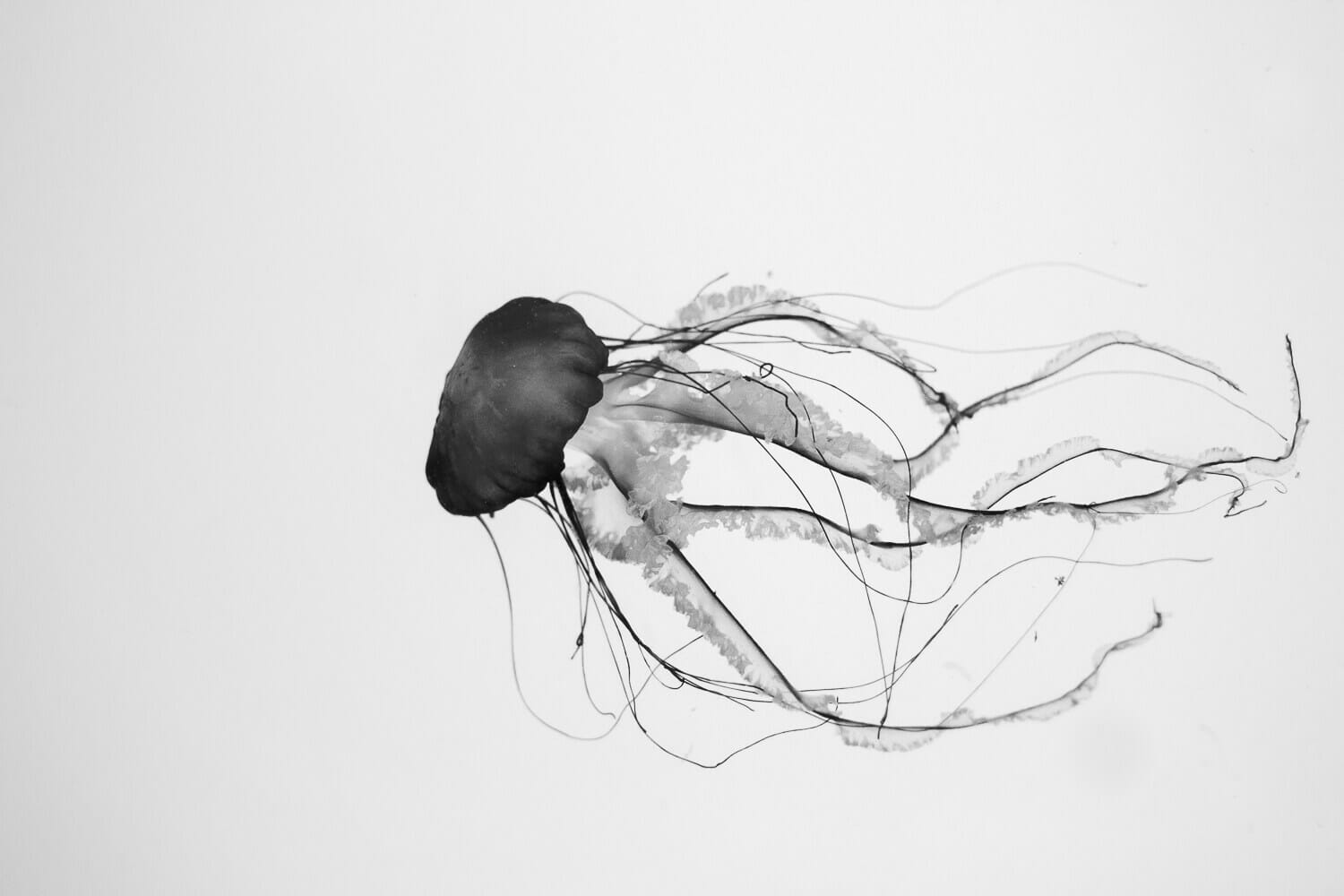
Photo essays are a chance to try new styles or techniques that stretch your skills and creativity. This image was part of an essay exploring simplicity and shape, and helped me learn new skills in black and white post-processing.
How photo essays improve your photography
Creating photo essays is an amazing antidote if you’ve ever felt a lack of direction or purpose in your photography. Photo essays help build your photographic skills in at least 3 important ways.
1. You become more strategic in creating a body of work
It's easy to get stuck in a rut of photographing whatever pops up in front of you. And when you do, you end up with a collection of stand-alone shots.
These singles may work fine as a print, a quick Instagram post, or an addition to your gallery of shots on your website. But amassing a bunch of one-off shots limits your opportunities as a photographer for everything from exhibits to getting your work published.
Building photo essays pushes you to think strategically about what you photograph, why, and how. You're working toward a particular deliverable – a cohesive visual essay – with the images you create.
This elevates your skills in crafting your photo essay, and in how you curate the rest of your work, from galleries on your website to selecting images to sell as prints .
2. You become more purposeful in your composition skills
Composition is so much more than just following the rule of thirds, golden spirals, or thinking about the angle of light in a shot.
Composition is also about thinking ahead in what you’re trying to accomplish with a photograph – from what you’re saying through it to its emotional impact on a viewer – and where it fits within a larger body of work.
Photo essays push you to think critically about each shot – from coming up with fresh compositions for familiar subjects, to devising surprising compositions to fit within a collection, to creating compositions that expand on what’s already in a photo essay.
You’re pushed beyond creating a single pleasing frame, which leads you to shoot more thoughtfully and proactively than ever.
(Here’s a podcast episode on switching from reactive shooting to proactive shooting.)
3. You develop strong editing and curation skills
Selecting which images stay, and which get left behind is one of the hardest jobs on a photographer’s to-do list. Mostly, it’s because of emotional attachment.
You might think it’s an amazing shot because you know the effort that went into capturing it. Or perhaps when you look at it, you get a twinge of the joy or exhilaration you felt the moment you captured it. There’s also the second-guessing that goes into which of two similar images is the best – which will people like more? So you’re tempted to just show both.
Ultimately, great photographers appear all the more skilled because they only show their best work. That in and of itself is a skill they’ve developed through years of ruthlessly editing their own work.
Because the most powerful photo essays only show a handful of extraordinary images, you’re bound to develop the very same critical skill (and look all the more talented because of it).
Photo essays are also a great stepping stone to creating photo stories. If you’re interested in moving beyond stand-alone shots and building stories, shooting photo essays will get your creative brain limbered up and ready for the adventure of photo stories.

A photo essay exploring the natural history of a favorite species is an exciting opportunity for an in-depth study. For me, that was a photo essay on emotive images of the American dipper (Cinclus mexicanus) as it hunts in streams.
9 Simple steps to create your photo essays
1. clarify your theme.
Choose a theme, topic, or concept you want to explore. Spend some time getting crystal clear on what you want to focus on. It helps to write out a few sentences, or even a few paragraphs noting:
- What you want the essay to be about
- What kinds of images you want to create as part of it
- How you’ll photograph the images
- The style, techniques, or gear you might use to create your images
- What “success” looks like when you’re done with your photo essay
You don’t have to stick to what you write down, of course. It can change during the image creation process. But fleshing your idea out on paper goes a long way in clarifying your photo essay theme and how you’ll go about creating it.
2. Create your images
Grab your camera and head outside!
As you’re photographing your essay, allow yourself some freedom to experiment. Try unusual compositions or techniques that are new to you.
Stretch your style a little, or “try on” the style of other photographers you admire who have photographed similar subjects.
Photo essays are wonderful opportunities to push yourself outside of your comfort zone and grow as a photographer.
Remember that a photo essay is a visually cohesive collection of images that make sense together. So, while you might stretch yourself into new terrain as you shoot, try to keep that approach, style, or strategy consistent.
Don’t be afraid to create lots of images. It’s great to have lots to choose from in the editing process, which comes up next.
3. Pull together your wide edit
Once you’ve created your images, pull together all the images that might make the cut. This could be as many as 40-60 images. Include anything you want to consider for the final essay in the wide edit.
From here, start weeding out images that:
- are weaker in composition or subject matter
- stand out like a sore thumb from the rest of the collection
- Are similar to other stronger images in the collection
It's helpful to review the images at thumbnail size. You make more instinctive decisions and can more easily see the body of work as a whole. If an image is strong even at thumbnail size to stand out from similar frames while also partnering well with other images in the collection, that's a good sign it's strong enough for the essay.
4. Post-process your images for a cohesive look
Now it’s time to post-process the images. Use whatever editing software you’re comfortable with to polish your images.
Again, a photo essay has a cohesive visual look. If you use presets, filters, or other tools, use them across all the images.
5. Finalize your selection
It’s time to make the tough decisions. Select only the strongest for your photo essay from your group of images.
Each image should be strong enough to stand on its own and make sense as part of the whole group.
Many photo essays range from 8-12 images. But of course, it varies based on the essay. The number of images you have in your final photo essay is up to you.
Remember, less is more. A photo essay is most powerful when each image deserves to be included.
6. Put your images in a purposeful order
Create a visual flow with your images. Decide which image is first, and build from there. Use compositions, colors, and subject matter to decide which image goes next, then next, then next in the order.
Think of it like music: notes are arranged in a way that builds energy, or slows it down, surprise listeners with a new refrain, or drop into a familiar chorus. How the notes are ordered creates emotional arcs for listeners.
How you order your images is similar.
Think of the experience a viewer will have as they look at one image, then the next, and the next. Order your images so they create the experience you want your audience to have.
7. Get feedback
The best photographers make space for feedback, even when it’s tough to hear. Your work benefits from not just hearing feedback, but listening to it and applying what you learn from it.
Show your photo essay to people who have different sensibilities or tastes. Friends, family members, fellow photographers – anyone you trust to give you honest feedback.
Watch their reactions and hear what they say about what they’re seeing. Use their feedback to guide you in the next step.
8. Refine, revise, and finalize
Let your photo essay marinate for a little while. Take a day or two away from it. Then use your freshened eyes and the feedback you received from the previous step to refine your essay.
Swap out any selects you might want to change and reorder the images if needed.
9. Add captions
Even if you don’t plan on displaying captions with your images, captioning your images is a great practice to get into. It gives context, story, and important information to each image. And, more than likely, you will want to use these captions at some point when you share your photo essay, which we dive into later in this article.
Add captions to the image files using Lightroom, Bridge, or other software programs.
Create a document, such as a Google or Word doc, with captions for each image.
In your captions, share a bit about the story behind the image, or the creation process. Add whatever makes sense to share that provides a greater understanding of the image and its purpose.
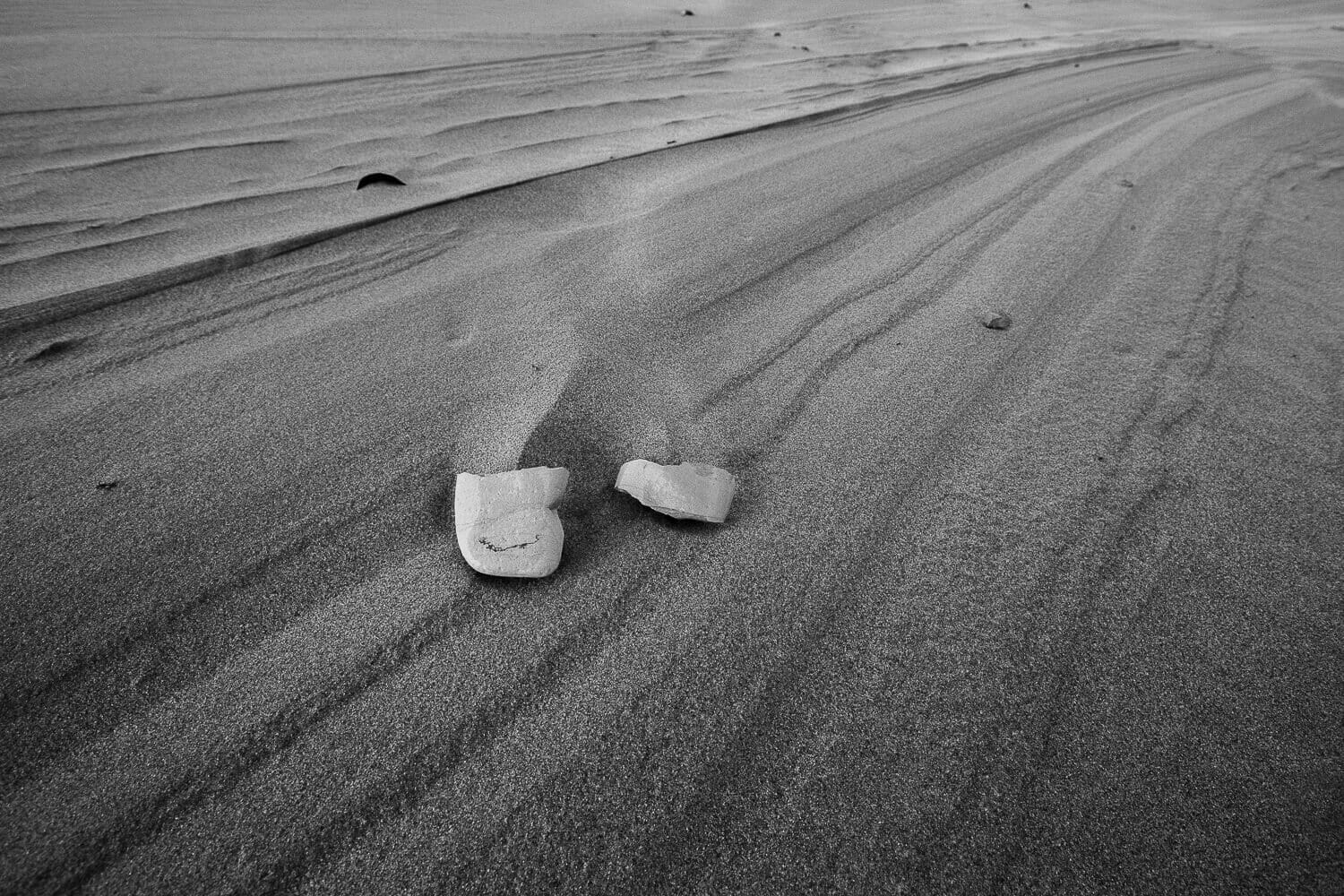
Photo essays allow you to explore deliberate style choices, such as a focus on shapes, patterns, textures, and lines. Since each photo is part of a larger essay, it encourages you to be bold with choices you might not otherwise make.
5 Examples of amazing nature photo essays
1. “how the water shapes us” from the nature conservancy.
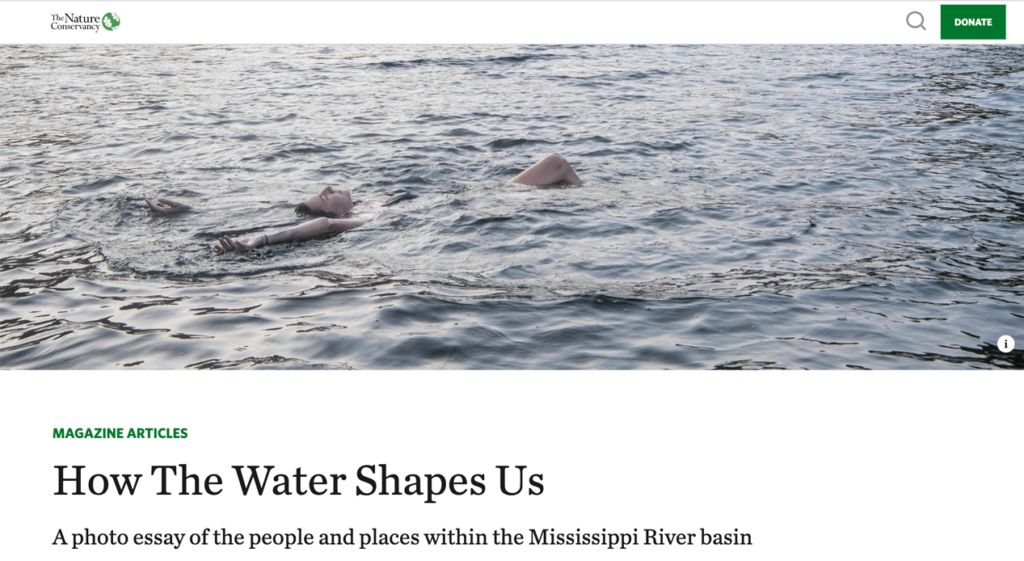
This gorgeous essay, crafted with the work of multiple photographers, explores the people and places within the Mississippi River basin. Through the images, we gain a sense of how the water influences life from the headwater all the way to the Gulf of Mexico. Notice how each photographer is tasked with the same theme, yet approaches it with their own distinct style and vision. It is a wonderful example of the sheer level of visual variety you can have while maintaining a consistent style or theme.
View it here
2. “A Cyclist on the English Landscape” from New York Times’ The World Through A Lens series

This photo essay is a series of self-portraits by travel photographer Roff Smith while “stuck” at home during the pandemic. As he peddled the roads making portraits, the project evolved into a “celebration of traveling at home”. It’s a great example of how visually consistent you can be inside a theme while making each image completely unique.
3. “Vermont, Dressed In Snow” from New York Times’ The World Through A Lens series

This essay by aerial photographer Caleb Kenna uses a very common photo essay theme: snow. Because all images are aerial photographs, there’s a consistency to them. Yet, the compositions are utterly unique from one another. It’s a great example of keeping viewers surprised as they move from one image to the next while still maintaining a clear focus on the theme.
4. “Starling-Studded Skies” from bioGraphic Magazine
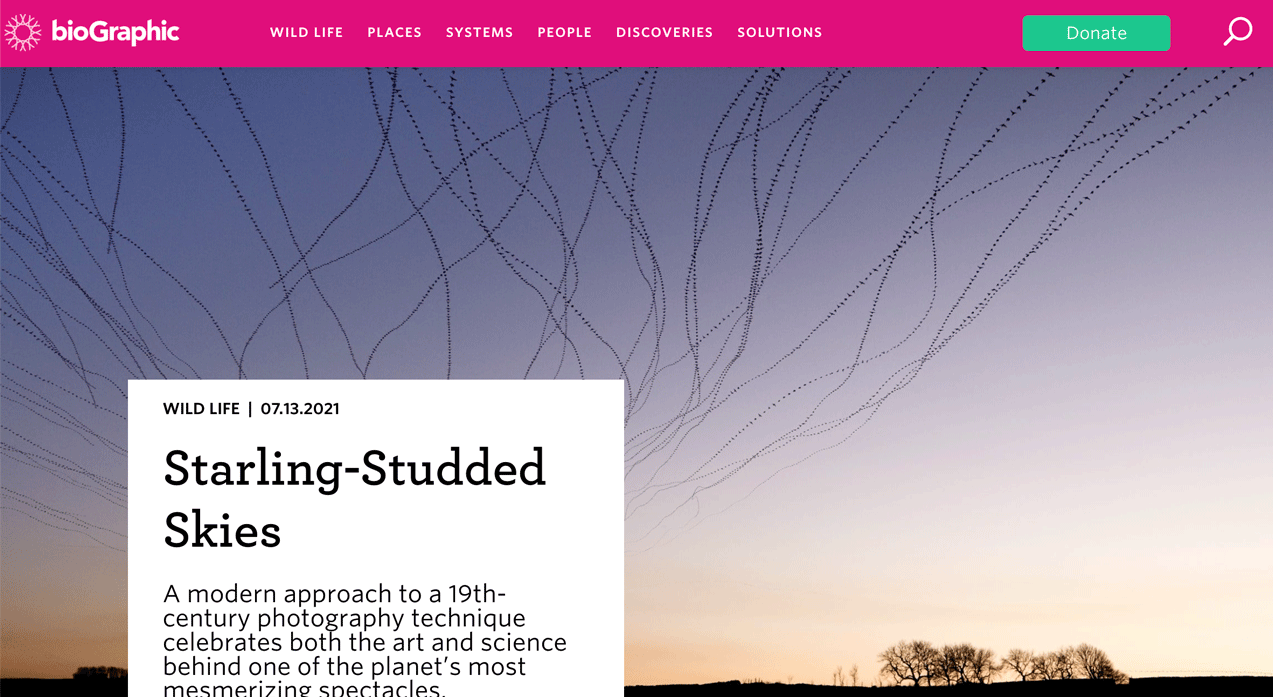
This beautiful essay is by Kathryn Cooper, a physicist trained in bioinformatics, and a talented photographer. She used a 19th century photographic technique, chronophotography, to create images that give us a look at the art and science of starling murmurations. She states: “I’m interested in the transient moments when chaos briefly changes to order, and thousands of individual bodies appear to move as one.” This essay is a great example of deep exploration of a concept using a specific photographic technique.
View it here (Note: must be viewed on desktop)
5. “These Scrappy Photos Capture the Action-Packed World Beneath a Bird Feeder” from Audubon Magazine
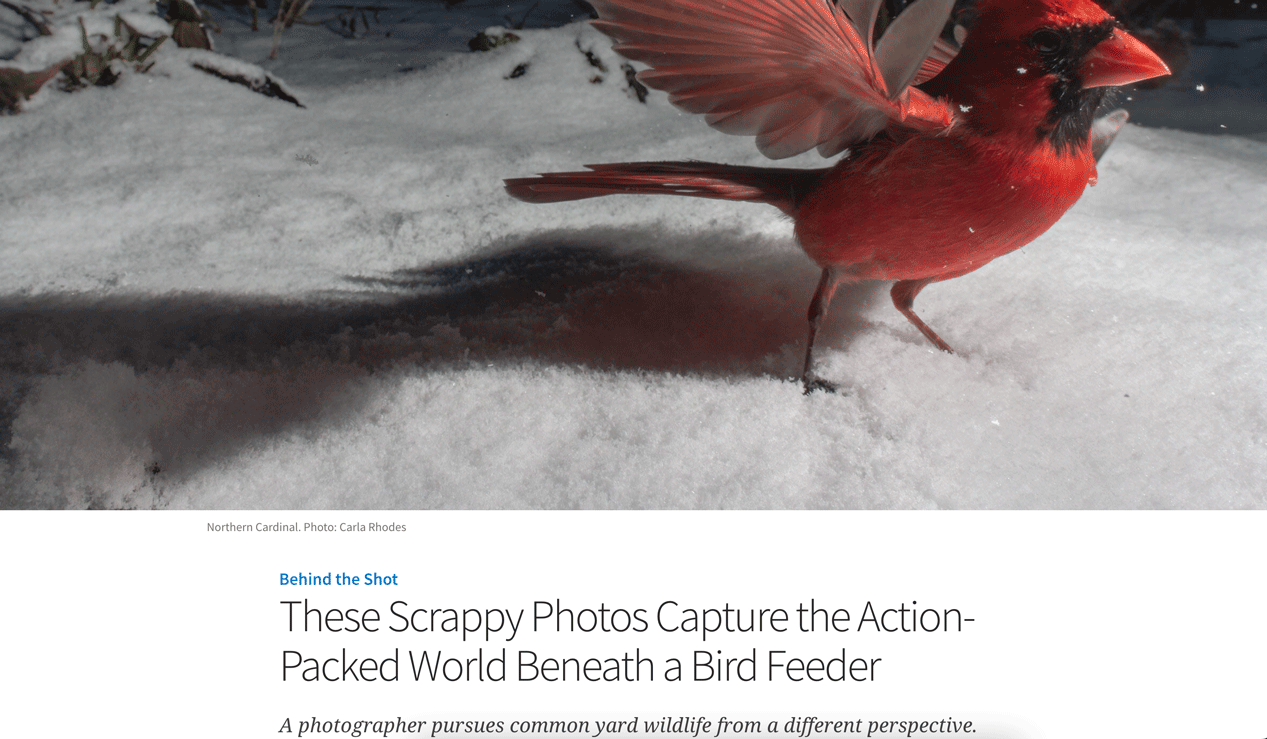
This photo essay from conservation photographer Carla Rhodes explores the wildlife that takes advantage of the bounty of food waiting under bird feeders . Using remote camera photography , Rhodes gives viewers a unique ground-level perspective and captures moments that make us feel like we’re in conversation with friends in the Hundred Acre Woods. This essay is a great example of how perspective, personality, and chance can all come into play as you explore both an idea and a technique.
25 Ideas for creative photo essays you can make
The possibilities for photo essays are truly endless – from the concepts you explore to the techniques you use and styles you apply.
Choose an idea, hone your unique perspective on it, then start applying the 9 simple steps from above.
- The life of a plant or animal (your favorite species, a species living in your yard, etc)
- The many shapes of a single species (a tree species, a bird species, etc)
- How a place changes over time
- The various moods of a place
- A conservation issue you care about
- Math in nature
- Urban nature
- Seasonal changes
- Your yard as a space for nature
- Shifting climate and its impacts
- Human impacts on environments
- Elements: Water, wind, fire, earth
- Day in the life (of a person, a place, a stream, a tree…)
- Outdoor recreation (birding, kayaking, hiking, naturalist journaling…)
- Wildlife rehabilitation
- Lunar cycles
- Sunlight and shadows
- Your local watershed
- Coexistence

As you zero in on a photo essay theme, consider two things: what most excites you about an idea, and what about it pushes you out of your comfort zone. The heady mix of joy and challenge will ensure you stick with it.
Your photo essay is ready for the world! Decide how you’d like to make an impact with your work. You might use one or several of the options below.
1. Share it on your website
Create a gallery or a scrollytelling page on your website. This is a great way to drive traffic to your website where people can peruse your photo essay and the rest of the photography you have.
Putting it on your website and optimizing your images for SEO helps you build organic traffic and potentially be discovered by a broader audience, including photo editors.
2. Create a scrollytelling web page
If you enjoy the experience of immersive visual experiences, consider making one using your essay. And no, you don’t have to be a whiz at code to make it happen.
Shorthand helps you build web pages with scrollytelling techniques that make a big impression on viewers. Their free plan allows you to publish 3 essays or stories.
3. Create a Medium post
If you don’t have a website and want to keep things simple, a post on Medium is a great option.
Though it’s known for being a platform for bloggers, it’s also possible to add images to a post for a simple scroll.
And, because readers can discover and share posts, it’s a good place for your photos to get the attention of people who might not otherwise come across it.
4. Share it on Instagram
Instagram has changed a lot over the last couple of years, but it’s still a place for photographers to share their work thoughtfully.
There are at least 3 great ways to share your photo essay on the platform.
– Create a single post for each image. Add a caption. Publish one post per day until the full essay is on your feed. Share each post via Instagram Stories to bring more attention and interaction to your photo essay.
– Create a carousel post. You can add up 10 photos to a carousel post, so you may need to create two of them for your full photo essay. Or you might create a series of carousel posts using 3-4 images in each.
– Create a Reel featuring your images as a video. The algorithm heavily favors reels, so turning your photo essay into a video experience can get it out to a larger audience.
I ran a “create a reel” challenge in my membership community. One member created a reel with her still images around a serious conservation issue. It gathered a ton of attention and landed her opportunities to share her message through YouTube and podcast interviews and publishing opportunities. Watch it here.

5. Exhibit it locally
Reach out to local galleries, cafes, pubs, or even the public library to see if they’re interested in hanging your photo essay for display. Many local businesses and organizations happily support the work of local artists.
6. Pitch your photo essay to publications
One of the best ways to reach an audience with your work is to get it published. Find publications that are a great fit for the theme and style of your photo essay, then pitch your essay for consideration. You gain a fantastic opportunity to share your work widely and can earn a paycheck at the same time.
Remember that if you want to get your photo essay published, you may want to hold back from sharing it publicly before you pitch it to publications.
PIN THIS FOR LATER
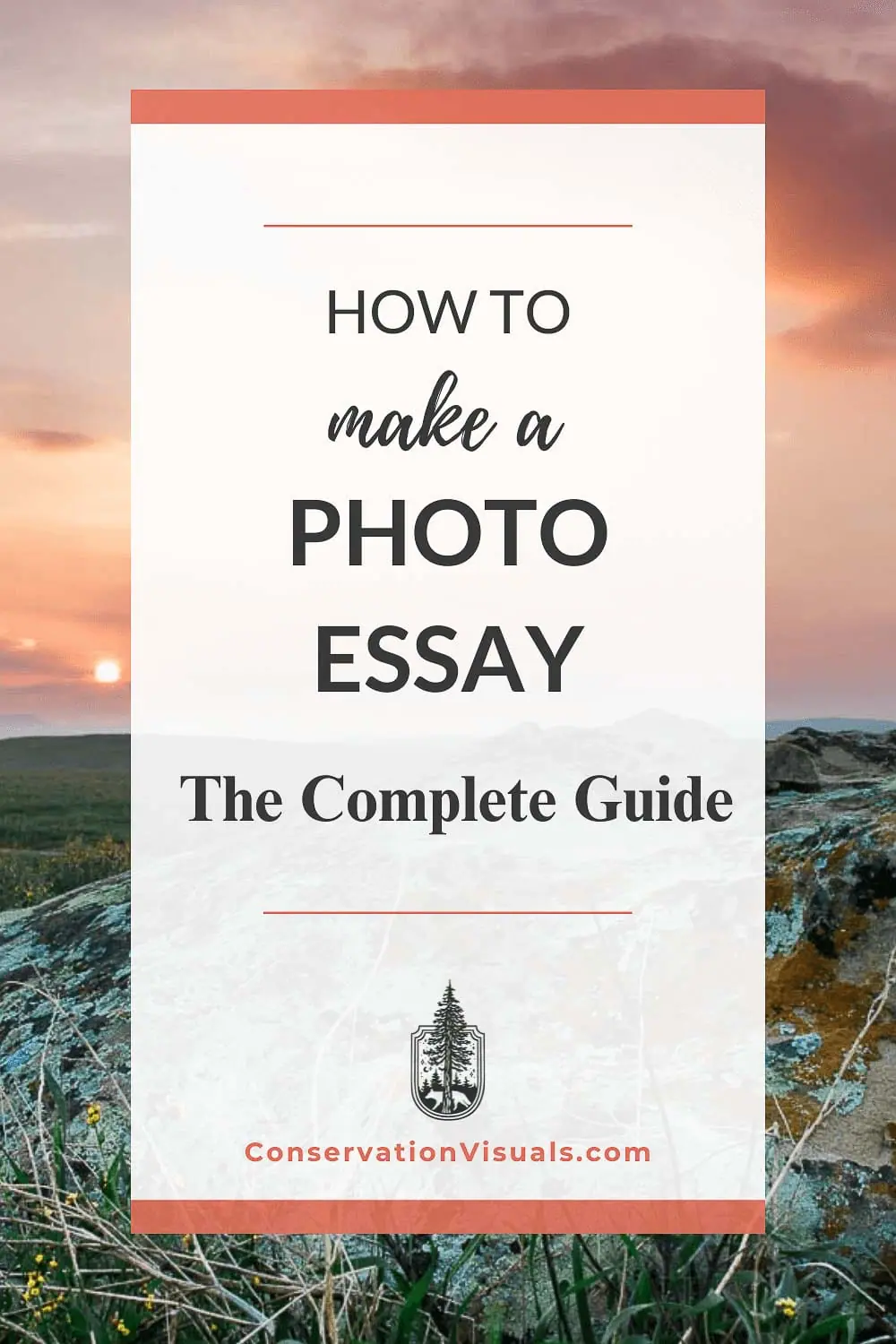
What’s your hidden storyteller personality as a nature photographer?
Take my FREE quiz to discover your storyteller super-strengths AND get a custom action plan based on your results

Jaymi Heimbuch
Next up….

Portrait vs. Landscape Orientation: The Biggest Differences to Know
Discover the impact of portrait & landscape orientation on your photography. Learn the key differences and how to choose the right orientation for your subject.

7 Best Ways to Sell Nature Photos Online (2024)
Photography Business , Tutorials
Discover the top 7 strategies for selling your stunning nature photos online. Learn how to sell your photos and reach a wider audience.

Camera Lens Hoods: When & How to Use Them for Better Photos
Photo Accessories , Gear , How to Use Photo Gear
Get better photos with camera lens hoods. Learn what it is, when to use it (or ditch it), and why it’s essential for nature photographers.
WHAT DO YOU WANT TO READ TODAY?
POPULAR SEARCHES: Best Cameras | Location Guide | Best Lenses | Wildlife
Take The Quiz
Get super clear on exactly what to focus on right now to grow your photography skills fast..
Take the FREE Full Frame Ecosystem Assessment ™ to crack the code on your roadblocks so you can hop into the creativity express lane with personalized action steps!
Ready to level up your awesome?
Start your next learning adventure.

52 Week Creativity Kit
A year of weekly bite-sized nature photography concepts and challenges that strengthen your camera skills and provide endless inspiration.

6 Must-Have Shots for a Photo Story
New to photo stories? Start by learning how to create a powerful photo story with the 6 essential images that all photo editors want to publish.

Photo Stories for Nature
Master how to photograph impressive photo stories and effectively share them so they make an impact.

Conservation Filmmaking 101
Master how to craft powerfully moving films that create conservation impact.
Get The Most Popular Free Resources
Make leaps forward in your visual storytelling download three of our most valuable free resources for photographers..

Ready to take better photos?
Get all the good things delivered.
Photography how-to guides, expert interviews, behind-the-scenes insights & more all delivered to your inbox weekly.
Privacy Overview
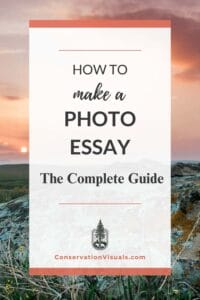
- Student Successes
- My Learning
17 Awesome Photo Essay Examples You Should Try Yourself
You can also select your interests for free access to our premium training:
If you’re looking for a photo essay example (or 17!), you’ve come to the right place. But what is the purpose of a photo essay? A photo essay is intended to tell a story or evoke emotion from the viewers through a series of photographs. They allow you to be creative and fully explore an idea. But how do you make one yourself? Here’s a list of photo essay examples. Choose one that you can easily do based on your photographic level and equipment.
Top 17 Photo Essay Examples
Here are some fantastic ideas to get you inspired to create your own photo essays!
17. Photograph a Protest

16. Transformation Photo Essays

15. Photograph the Same Place

14. Create a Photowalk

13. Follow the Change

12. Photograph a Local Event

11. Photograph an Abandoned Building

10. Behind the Scenes of a Photo Shoot

9. Capture Street Fashion

8. Landmark Photo Essay

7. Fathers & Children

6. A Day In the Life

5. Education Photo Essay

4. Fictitious Meals

3. Photograph Coffee Shops Using Cafenol

2. Photograph the Photographers

1. Capture the Neighbors

Photo essays tell stories. And there are plenty of amazingly interesting stories to tell! Photographing photo essays is a great way to practice your photography skills while having fun. You might even learn something! These photo essay examples are here to provide you with the inspiration to go out and tell your own stories through photos!
Popular Content

Picturing the Personal Essay: A Visual Guide
A design professor from Denmark once drew for me a picture of the creative process, which had been the subject of his doctoral dissertation. “Here,” he said. “This is what it looks like”:
Nothing is wasted though, said the design professor, because every bend in the process is helping you to arrive at your necessary structure. By trying a different angle or creating a composite of past approaches, you get closer and closer to what you intend. You begin to delineate the organic form that will match your content.
The remarkable thing about personal essays, which openly mimic this exploratory process, is that they can be so quirky in their “shape.” No diagram matches the exact form that evolves, and that is because the best essayists resist predictable approaches. They refuse to limit themselves to generic forms, which, like mannequins, can be tricked out in personal clothing. Nevertheless, recognizing a few basic underlying structures may help an essay writer invent a more personal, more unique form. Here, then, are several main options.
Narrative with a lift
Take, for example, Jo Ann Beard’s essay “The Fourth State of Matter.” The narrator, abandoned by her husband, is caring for a dying dog and going to work at a university office to which an angry graduate student has brought a gun. The sequence of scenes matches roughly the unfolding of real events, but there is suspense to pull us along, represented by questions we want answered. In fact, within Beard’s narrative, two sets of questions, correlating to parallel subplots, create a kind of double tension. When the setting is Beard’s house, we wonder, “Will she find a way to let go of the dying dog, not to mention her failing marriage?” And when she’s at work, we find ourselves asking, “What about the guy with the gun? How will he impact her one ‘safe place’?”
One interesting side note: trauma, which is a common source for personal essays, can easily cause an author to get stuck on the sort of plateau Kittredge described. Jo Ann Beard, while clearly wrestling with the immobilizing impact of her own trauma, found a way to keep the reader moving both forward and upward, until the rising tension reached its inevitable climax: the graduate student firing his gun. I have seen less-experienced writers who, by contrast, seem almost to jog in place emotionally, clutching at a kind of post-traumatic scar tissue.
The whorl of reflection
Let’s set aside narrative, though, since it is not the only mode for a personal essay. In fact, most essays are more topical or reflective, which means they don’t move through time in a linear fashion as short stories do.
One of the benefits of such a circling approach is that it seems more organic, just like the mind’s creative process. It also allows for a wider variety of perspectives—illuminating the subject from multiple angles. A classic example would be “Under the Influence,” Scott Russell Sanders’s essay about his alcoholic father. Instead of luring us up the chronological slope of plot, Sanders spirals around his father’s drinking, leading us to a wide range of realizations about alcoholism: how it gets portrayed in films, how it compares to demon-possession in the Bible, how it results in violence in other families, how it raises the author’s need for control, and even how it influences the next generation through his workaholic over-compensation. We don’t read an essay like this out of plot-driven suspense so much as for the pleasure of being surprised, again and again, by new perspective and new insight.
The formal limits of focus
My own theory is that most personal essayists, because of a natural ability to extrapolate, do not struggle to find subjects to write about. Writer’s block is not their problem since their minds overflow with remembered experiences and related ideas. While a fiction writer may need to invent from scratch, adding and adding, the essayist usually needs to do the opposite, deleting and deleting. As a result, nonfiction creativity is best demonstrated by what has been left out. The essay is a figure locked in a too-large-lump of personal experience, and the good essayist chisels away all unnecessary material.
Virginia Woolf’s “Street Haunting” is an odd but useful model. She limits that essay to a single evening walk in London, ostensibly taken to buy a pencil. I suspect Woolf gave herself permission to combine incidents from several walks in London, but no matter. The essay feels “brought together” by the imposed limits of time and place.
As it happens, “Street Haunting” is also an interesting prototype for a kind of essay quite popular today: the segmented essay. Although the work is unified by the frame of a single evening stroll, it can also be seen as a combination of many individual framed moments. If we remove the purpose of the journey—to find a pencil—the essay falls neatly into a set of discrete scenes with related reveries: a daydreaming lady witnessed through a window, a dwarfish woman trying on shoes, an imagined gathering of royalty on the other side of a palace wall, and eventually the arguing of a married couple in the shop where Woolf finally gets her pencil.
Dipping into the well
Our attention to thematic unity brings up one more important dynamic in most personal essays. Not only do we have a horizontal movement through time, but there is also a vertical descent into meaning. As a result, essayists will often pause the forward motion to dip into a thematic well.
In fact, Berry uses several of these loops of reflective commentary, and though they seem to be digressions, temporarily pulling the reader away from the forward flow of the plot, they develop an essential second layer to the essay.
Braided and layered structures
Want an example? Look at Judith Kitchen’s three-page essay “Culloden,” which manages to leap back and forth quite rapidly, from a rain-pelted moor in 18th-century Scotland to 19th-century farms in America to the blasted ruins of Hiroshima on August 6, 1945, the author’s birthday. The sentences themselves suggest the impressionistic effect that Kitchen is after, being compressed to fragments, rid of the excess verbiage we expect in formal discourse: “Late afternoon. The sky hunkers down, presses, like a lover, against the land. Small sounds. A far sheep, faint barking. . . .” And as the images accumulate, layer upon layer, we begin to feel the author’s fundamental mood, a painful awareness of her own inescapable mortality. We begin to encounter the piece on a visceral level that is more intuitive than rational. Like a poem, in prose.
Coming Full Circle
First of all, endings are related to beginnings. That’s why many essays seem to circle back to where they began. Annie Dillard, in her widely anthologized piece “Living Like Weasels,” opens with a dried-out weasel skull that is attached, like a pendant, to the throat of a living eagle—macabre proof that the weasel was carried aloft to die and be torn apart. Then, at the end of the essay, Dillard alludes to the skull again, stating, “I think it would be well, and proper, and obedient, and pure, to grasp your one necessity and not let it go, to dangle from it limp wherever it takes you.”
See how deftly Dillard accomplishes this effect simply by positing one last imagined or theoretical possibility—a way of life she hopes to master, that we ourselves might master: “Seize it and let it seize you up aloft even, till your eyes burn out and drop; let your musky flesh fall off in shreds, and let your very bones unhinge and scatter, loosened over fields, over fields and woods, lightly, thoughtless, from any height at all, from as high as eagles.” Yes, the essay has come full circle, echoing the opening image of the weasel’s skull, but it also points away, beyond itself, to something yet to be realized. The ending both closes and opens at the same time.
All diagrams rendered by Claire Bascom. An earlier version of this essay appeared in Volume I, issue 1 of The Essay Review .
This essay is fabulously This essay is fabulously useful! I’ll be showing it to my creative writing students semester after semester, I’m sure. I appreciate the piece’s clarity and use of perfect examples.
I love the succinct diagrams and cited writing examples. Very instructive and useful as A.P. comments above. I also loved that I had read the Woolf journey to buy a pencil–one of my favorite essays because it is such a familiar experience–that of observing people.
Leave a Reply Cancel reply
You must be logged in to post a comment.
- Grades 6-12
- School Leaders
Learn How to Support Stressed and Anxious Students.
Teaching the Photo Essay
A picture is worth 1,000 words.
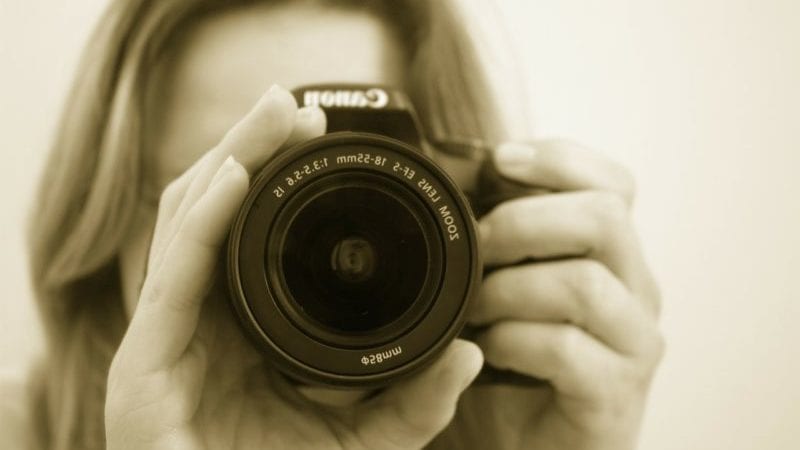
Your students, if they’re anything like mine, love to communicate through images—photos on Instagram , GIFs shared in a text, photo stories on Snapchat. And yet, so much of our conversation in school revolves around words. Understanding text is critical to students’ success now and in the future. But do we also help students identify, read and understand images in order to become literate in the visual language that is all around us? The photo essay can be a great middle or high school assignment that will have strong appeal and grow your students’ writing skills.
What Is a Photo Essay?
For those who aren’t familiar with the term “photo essay,” have no fear. A photo essay, in its simplest form, is a series of pictures that evokes an emotion, presents an idea or helps tell a story. You’ve been exposed to photo essays for your entire life—possibly without even knowing it. For example, you may have seen Dorothea Lange’s Migrant Mother:
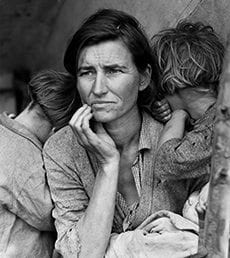
An iconic image of the Great Depression, this picture, along with Lange’s other gripping photos, helped Americans better understand the effects of poverty in California as well as across the nation. Migrant Mother is one of countless photographs that helped persuade, influence or engage viewers in ways that text alone could not.
Photo essays can feature text through articles and descriptions, or they can stand alone with simple captions to give context. The versatility of photo essays has helped the medium become a part of our culture for centuries, from the American Civil War to modern environmental disasters like the 2010 earthquake in Haiti. This versatility is also what makes the photo essay a great educational asset in classrooms today; teachers can use them in any content area. Math students can use them to show a geometric concept in real life. Science students can document a chemistry process at home. Auto students can photograph the technique—and joys and frustrations—of learning a new procedure.
So, where does a teacher begin? Read further for tips and ideas for making photo essays a part of your teaching toolbox.
Start With Photos
Introducing photo essays as a means of changing lives and changing society can hook student interest in the medium. Begin by simply showing pictures and letting students discuss their reactions. Consider this famous photo of the field at Antietam during the Civil War. Share some of the photos from this collection from CNN of 25 of the Most Iconic Photograph s or this list of 50 Influential Photographs That Changed Our World .
Each of these photographs stirs emotion and sends our minds searching for answers. As a warm-up assignment or series of assignments, have students choose (or assign randomly) a photograph to write about. What’s the story? Why did this happen? Who was involved?
DIY Photographs
Before giving a formal photo essay assignment, give students an opportunity to practice and receive feedback. Consider presenting students with several open-ended, ungraded challenges like “For class tomorrow, take a photo that depicts ‘Struggle.’” Other possible photo topics: chaos, frustration, friendship, school. Have students email you their photo homework and share it as a slideshow. Talk about the images. Do they convey the theme?
You can give examples or suggestions; however, giving too many examples and requirements can narrow students’ creativity. The purpose of this trial run is to generate conversation and introduce students to thinking like photographers, so don’t worry if the photos aren’t what you had in mind; it’s about getting feedback on what the student had in mind.
Technique 101
Even though the goal of a photo essay is to influence and create discussion, there is still benefit in giving students a crash course on simple photography concepts. Don’t feel like you have to teach a master-level course on dark-room development. Even a simple overview on the “Rule of Thirds” and the importance of perspective can be enough to help students create intentional, visually stirring photographs.
You can teach these ideas directly or have students do the work by researching on their own. They have most likely seen hundreds of movies, advertisements and photos, so these lessons are simply labeling what they’ve already experienced. Having some knowledge of composition will not only help students improve their visual literacy, it will also help empower them to take photos of their own.
Choose Your Purpose
Are students telling their own stories of their neighborhoods or their families? Are they addressing a social issue or making an argument through their images and text? A photo essay could be a great assignment in science to document a process or focus on nature.
If you are just getting started, start out small: Have students create a short photo essay (two to five images) to present a topic, process or idea you have been focusing on in class. Here’s a Photo Essay Planning Guide to share with your students.
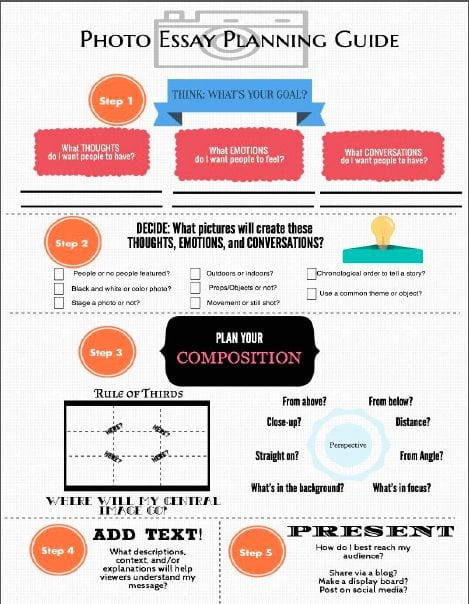
With pictures becoming a dominant medium in our image-filled world, it’s not a question of if we should give students practice and feedback with visual literacy, it’s a question of how . Photo essays are a simple, engaging way to start. So, what’s your plan?
You Might Also Like

What Is a Suffix? (Plus Examples and Teaching Ideas)
Improve comprehension, vocabulary, and more! Continue Reading
Copyright © 2024. All rights reserved. 5335 Gate Parkway, Jacksonville, FL 32256
Pictures That Tell Stories: Photo Essay Examples

Like any other type of artist, a photographer’s job is to tell a story through their pictures. While some of the most creative among us can invoke emotion or convey a thought with one single photo, the rest of us will rely on a photo essay.
In the following article, we’ll go into detail about what a photo essay is and how to craft one while providing some detailed photo essay examples.
What is a Photo Essay?
A photo essay is a series of photographs that, when assembled in a particular order, tell a unique and compelling story. While some photographers choose only to use pictures in their presentations, others will incorporate captions, comments, or even full paragraphs of text to provide more exposition for the scene they are unfolding.
A photo essay is a well-established part of photojournalism and have been used for decades to present a variety of information to the reader. Some of the most famous photo essayists include Ansel Adams , W. Eugene Smith, and James Nachtwey. Of course, there are thousands of photo essay examples out there from which you can draw inspiration.
Why Consider Creating a Photo Essay?
As the old saying goes, “a picture is worth 1000 words.” This adage is, for many photographers, reason enough to hold a photo essay in particularly high regard.
For others, a photo essay allow them to take pictures that are already interesting and construct intricate, emotionally-charged tales out of them. For all photographers, it is yet another skill they can master to become better at their craft.
As you might expect, the photo essay have had a long history of being associated with photojournalism. From the Great Depression to Civil Rights Marches and beyond, many compelling stories have been told through a combination of images and text, or photos alone. A photo essay often evokes an intense reaction, whether artistic in nature or designed to prove a socio-political point.
Below, we’ll list some famous photo essay samples to further illustrate the subject.

Become the photographer you were born to be.
Join Cole’s Classroom
Famous Photo Essays
“The Great Depression” by Dorothea Lange – Shot and arranged in the 1930s, this famous photo essay still serves as a stark reminder of The Great Depression and Dust Bowl America . Beautifully photographed, the black and white images offer a bleak insight to one of the country’s most difficult times.
“The Vietnam War” by Philip Jones Griffiths – Many artists consider the Griffiths’ photo essay works to be some of the most important records of the war in Vietnam. His photographs and great photo essays are particularly well-remembered for going against public opinion and showing the suffering of the “other side,” a novel concept when it came to war photography.
Various American Natural Sites by Ansel Adams – Adams bought the beauty of nature home to millions, photographing the American Southwest and places like Yosemite National Park in a way that made the photos seem huge, imposing, and beautiful.
“Everyday” by Noah Kalina – Is a series of photographs arranged into a video. This photo essay features daily photographs of the artist himself, who began taking capturing the images when he was 19 and continued to do so for six years.
“Signed, X” by Kate Ryan – This is a powerful photo essay put together to show the long-term effects of sexual violence and assault. This photo essay is special in that it remains ongoing, with more subjects being added every year.
Common Types of Photo Essays
While a photo essay do not have to conform to any specific format or design, there are two “umbrella terms” under which almost all genres of photo essays tend to fall. A photo essay is thematic and narrative. In the following section, we’ll give some details about the differences between the two types, and then cover some common genres used by many artists.
⬥ Thematic
A thematic photo essay speak on a specific subject. For instance, numerous photo essays were put together in the 1930s to capture the ruin of The Great Depression. Though some of these presentations followed specific people or families, they mostly told the “story” of the entire event. There is much more freedom with a thematic photo essay, and you can utilize numerous locations and subjects. Text is less common with these types of presentations.
⬥ Narrative
A narrative photo essay is much more specific than thematic essays, and they tend to tell a much more direct story. For instance, rather than show a number of scenes from a Great Depression Era town, the photographer might show the daily life of a person living in Dust Bowl America. There are few rules about how broad or narrow the scope needs to be, so photographers have endless creative freedom. These types of works frequently utilize text.
Common Photo Essay Genres
Walk a City – This photo essay is when you schedule a time to walk around a city, neighborhood, or natural site with the sole goal of taking photos. Usually thematic in nature, this type of photo essay allows you to capture a specific place, it’s energy, and its moods and then pass them along to others.
The Relationship Photo Essay – The interaction between families and loved ones if often a fascinating topic for a photo essay. This photo essay genre, in particular, gives photographers an excellent opportunity to capture complex emotions like love and abstract concepts like friendship. When paired with introspective text, the results can be quite stunning.
The Timelapse Transformation Photo Essay – The goal of a transformation photo essay is to capture the way a subject changes over time. Some people take years or even decades putting together a transformation photo essay, with subjects ranging from people to buildings to trees to particular areas of a city.
Going Behind The Scenes Photo Essay – Many people are fascinated by what goes on behind the scenes of big events. Providing the photographer can get access; to an education photo essay can tell a very unique and compelling story to their viewers with this photo essay.
Photo Essay of a Special Event – There are always events and occasions going on that would make an interesting subject for a photo essay. Ideas for this photo essay include concerts, block parties, graduations, marches, and protests. Images from some of the latter were integral to the popularity of great photo essays.
The Daily Life Photo Essay – This type of photo essay often focus on a single subject and attempt to show “a day in the life” of that person or object through the photographs. This type of photo essay can be quite powerful depending on the subject matter and invoke many feelings in the people who view them.
Become the photographer of your dreams with Cole’s Classroom.
Start Free Trial
Photo Essay Ideas and Examples
One of the best ways to gain a better understanding of photo essays is to view some photo essay samples. If you take the time to study these executions in detail, you’ll see just how photo essays can make you a better photographer and offer you a better “voice” with which to speak to your audience.
Some of these photo essay ideas we’ve already touched on briefly, while others will be completely new to you.
Cover a Protest or March
Some of the best photo essay examples come from marches, protests, and other events associated with movements or socio-political statements. Such events allow you to take pictures of angry, happy, or otherwise empowered individuals in high-energy settings. The photo essay narrative can also be further enhanced by arriving early or staying long after the protest has ended to catch contrasting images.
Photograph a Local Event
Whether you know it or not, countless unique and interesting events are happening in and around your town this year. Such events provide photographers new opportunities to put together a compelling photo essay. From ethnic festivals to historical events to food and beverage celebrations, there are many different ways to capture and celebrate local life.
Visit an Abandoned Site or Building
Old homes and historical sites are rich with detail and can sometimes appear dilapidated, overgrown by weeds, or broken down by time. These qualities make them a dynamic and exciting subject. Many great photo essay works of abandoned homes use a mix of far-away shots, close-ups, weird angles, and unique lighting. Such techniques help set a mood that the audience can feel through the photographic essay.
Chronicle a Pregnancy
Few photo essay topics could be more personal than telling the story of a pregnancy. Though this photo essay example can require some preparation and will take a lot of time, the results of a photographic essay like this are usually extremely emotionally-charged and touching. In some cases, photographers will continue the photo essay project as the child grows as well.
Photograph Unique Lifestyles
People all over the world are embracing society’s changes in different ways. People live in vans or in “tiny houses,” living in the woods miles away from everyone else, and others are growing food on self-sustaining farms. Some of the best photo essay works have been born out of these new, inspiring movements.
Photograph Animals or Pets
If you have a favorite animal (or one that you know very little about), you might want to arrange a way to see it up close and tell its story through images. You can take photos like this in a zoo or the animal’s natural habitat, depending on the type of animal you choose. Pets are another great topic for a photo essay and are among the most popular subjects for many photographers.
Show Body Positive Themes
So much of modern photography is about showing the best looking, prettiest, or sexiest people at all times. Choosing a photo essay theme like body positivity, however, allows you to film a wide range of interesting-looking people from all walks of life.
Such a photo essay theme doesn’t just apply to women, as beauty can be found everywhere. As a photo essay photographer, it’s your job to find it!
Bring Social Issues to Life
Some of the most impactful social photo essay examples are those where the photographer focuses on social issues. From discrimination to domestic violence to the injustices of the prison system, there are many ways that a creative photographer can highlight what’s wrong with the world. This type of photo essay can be incredibly powerful when paired with compelling subjects and some basic text.
Photograph Style and Fashion
If you live in or know of a particularly stylish locale or area, you can put together an excellent thematic photo essay by capturing impromptu shots of well-dressed people as they pass by. As with culture, style is easily identifiable and is as unifying as it is divisive. Great photo essay examples include people who’ve covered fashion sub-genres from all over the world, like urban hip hop or Japanese Visual Kei.
Photograph Native Cultures and Traditions
If you’ve ever opened up a copy of National Geographic, you’ve probably seen photo essay photos that fit this category. To many, the traditions, dress, religious ceremonies, and celebrations of native peoples and foreign cultures can be utterly captivating. For travel photographers, this photo essay is considered one of the best ways to tell a story with or without text.
Capture Seasonal Or Time Changes In A Landmark Photo Essay
Time-lapse photography is very compelling to most viewers. What they do in a few hours, however, others are doing over months, years, and even decades. If you know of an exciting landscape or scene, you can try to capture the same image in Winter, Spring, Summer, and Fall, and put that all together into one landmark photo essay.
Alternatively, you can photograph something being lost or ravaged by time or weather. The subject of your landmark photo essay can be as simple as the wall of an old building or as complex as an old house in the woods being taken over by nature. As always, there are countless transformation-based landmark photo essay works from which you can draw inspiration.
Photograph Humanitarian Efforts or Charity
Humanitarian efforts by groups like Habitat for Humanity, the Red Cross, and Doctors Without Borders can invoke a powerful response through even the simplest of photos. While it can be hard to put yourself in a position to get the images, there are countless photo essay examples to serve as inspiration for your photo essay project.
How to Create a Photo Essay
There is no singular way to create a photo essay. As it is, ultimately, and artistic expression of the photographer, there is no right, wrong, good, or bad. However, like all stories, some tell them well and those who do not. Luckily, as with all things, practice does make perfect. Below, we’ve listed some basic steps outlining how to create a photo essay
Steps To Create A Photo Essay
Choose Your Topic – While some photo essayists will be able to “happen upon” a photo story and turn it into something compelling, most will want to choose their photo essay topics ahead of time. While the genres listed above should provide a great starting place, it’s essential to understand that photo essay topics can cover any event or occasion and any span of time
Do Some Research – The next step to creating a photo essay is to do some basic research. Examples could include learning the history of the area you’re shooting or the background of the person you photograph. If you’re photographing a new event, consider learning the story behind it. Doing so will give you ideas on what to look for when you’re shooting.
Make a Storyboard – Storyboards are incredibly useful tools when you’re still in the process of deciding what photo story you want to tell. By laying out your ideas shot by shot, or even doing rough illustrations of what you’re trying to capture, you can prepare your photo story before you head out to take your photos.
This process is especially important if you have little to no control over your chosen subject. People who are participating in a march or protest, for instance, aren’t going to wait for you to get in position before offering up the perfect shot. You need to know what you’re looking for and be prepared to get it.
Get the Right Images – If you have a shot list or storyboard, you’ll be well-prepared to take on your photo essay. Make sure you give yourself enough time (where applicable) and take plenty of photos, so you have a lot from which to choose. It would also be a good idea to explore the area, show up early, and stay late. You never know when an idea might strike you.
Assemble Your Story – Once you develop or organize your photos on your computer, you need to choose the pictures that tell the most compelling photo story or stories. You might also find some great images that don’t fit your photo story These can still find a place in your portfolio, however, or perhaps a completely different photo essay you create later.
Depending on the type of photographer you are, you might choose to crop or digitally edit some of your photos to enhance the emotions they invoke. Doing so is completely at your discretion, but worth considering if you feel you can improve upon the naked image.

Ready to take your photography to the next level?
Join Cole’s Classroom today! »
Best Photo Essays Tips And Tricks
Before you approach the art of photo essaying for the first time, you might want to consider with these photo essay examples some techniques, tips, and tricks that can make your session more fun and your final results more interesting. Below, we’ve compiled a list of some of the best advice we could find on the subject of photo essays.
⬥ Experiment All You Want
You can, and should, plan your topic and your theme with as much attention to detail as possible. That said, some of the best photo essay examples come to us from photographers that got caught up in the moment and decided to experiment in different ways. Ideas for experimentation include the following:
Angles – Citizen Kane is still revered today for the unique, dramatic angles used in the film. Though that was a motion picture and not photography, the same basic principles still apply. Don’t be afraid to photograph some different angles to see how they bring your subject to life in different ways.
Color – Some images have more gravitas in black in white or sepia tone. You can say the same for images that use color in an engaging, dynamic way. You always have room to experiment with color, both before and after the shoot.
Contrast – Dark and light, happy and sad, rich and poor – contrast is an instantly recognizable form of tension that you can easily include in your photo essay. In some cases, you can plan for dramatic contrasts. In other cases, you simply need to keep your eyes open.
Exposure Settings – You can play with light in terms of exposure as well, setting a number of different moods in the resulting photos. Some photographers even do random double exposures to create a photo essay that’s original.
Filters – There are endless post-production options available to photographers, particularly if they use digital cameras. Using different programs and apps, you can completely alter the look and feel of your image, changing it from warm to cool or altering dozens of different settings.
Want to never run out of natural & authentic poses? You need this ⬇️
Click here & get it today for a huge discount., ⬥ take more photos than you need .
If you’re using traditional film instead of a digital camera, you’re going to want to stock up. Getting the right shots for a photo essay usually involves taking hundreds of images that will end up in the rubbish bin. Taking extra pictures you won’t use is just the nature of the photography process. Luckily, there’s nothing better than coming home to realize that you managed to capture that one, perfect photograph.
⬥ Set the Scene
You’re not just telling a story to your audience – you’re writing it as well. If the scene you want to capture doesn’t have the look you want, don’t be afraid to move things around until it does. While this doesn’t often apply to photographing events that you have no control over, you shouldn’t be afraid to take a second to make an OK shot a great shot.
⬥ Capture Now, Edit Later
Editing, cropping, and digital effects can add a lot of drama and artistic flair to your photos. That said, you shouldn’t waste time on a shoot, thinking about how you can edit it later. Instead, make sure you’re capturing everything that you want and not missing out on any unique pictures. If you need to make changes later, you’ll have plenty of time!
⬥ Make It Fun
As photographers, we know that taking pictures is part art, part skill, and part performance. If you want to take the best photo essays, you need to loosen up and have fun. Again, you’ll want to plan for your topic as best as you can, but don’t be afraid to lose yourself in the experience. Once you let yourself relax, both the ideas and the opportunities will manifest.
⬥ It’s All in The Details
When someone puts out a photographic essay for an audience, that work usually gets analyzed with great attention to detail. You need to apply this same level of scrutiny to the shots you choose to include in your photo essay. If something is out of place or (in the case of historical work) out of time, you can bet the audience will notice.
⬥ Consider Adding Text
While it isn’t necessary, a photographic essay can be more powerful by the addition of text. This is especially true of images with an interesting background story that can’t be conveyed through the image alone. If you don’t feel up to the task of writing content, consider partnering with another artist and allowing them tor bring your work to life.
Final Thoughts
The world is waiting to tell us story after story. Through the best photo essays, we can capture the elements of those stories and create a photo essay that can invoke a variety of emotions in our audience.
No matter the type of cameras we choose, the techniques we embrace, or the topics we select, what really matters is that the photos say something about the people, objects, and events that make our world wonderful.
Dream of Being a Pro Photographer?
Join Cole’s Classroom today to make it a reality.
Similar Posts

6 Fun Ideas for Easy Festive Holiday Images
Have You Always Struggled Taking Holiday Images? Here Are Some Quick Tips to Help. It’s a good idea for a change to try and take some interesting and different images this holiday season. Now depending on what part of the world you are in, the decorations that are available and the things to shoot around…
![picture essay pdf Personal Branding Photography Basics [Complete Guide]](https://colesclassroom.com/wp-content/uploads/2019/06/adorable-adult-beautiful-774095-768x512.jpg)
Personal Branding Photography Basics [Complete Guide]
Help other entrepreneurs build their business with personal branding photography Personal branding photography is one of the fastest growing niches around. Entrepreneurs and small business owners recognize the value of high-quality photography in their own marketing efforts. Your skills can help others and both of you can achieve your business goals! What is personal branding…
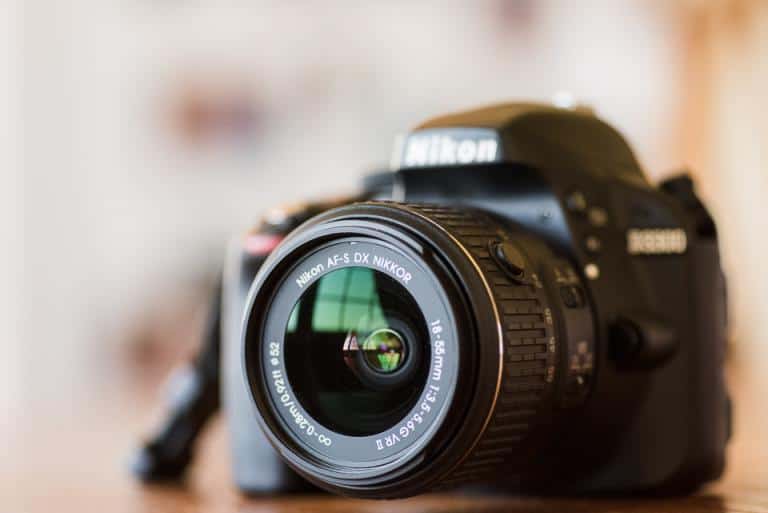
Photography for Beginners: 6 Stops On Your Journey to Expert Level Photos
Looking for some tips on photography for beginners? We have you covered! There. See that mark right there? Those two little red marks on your arm? That’s where you got bit by the photography bug. You love taking photos with your cell phone. Kids, friends, food, vacay…if you experience it, you document it in a…
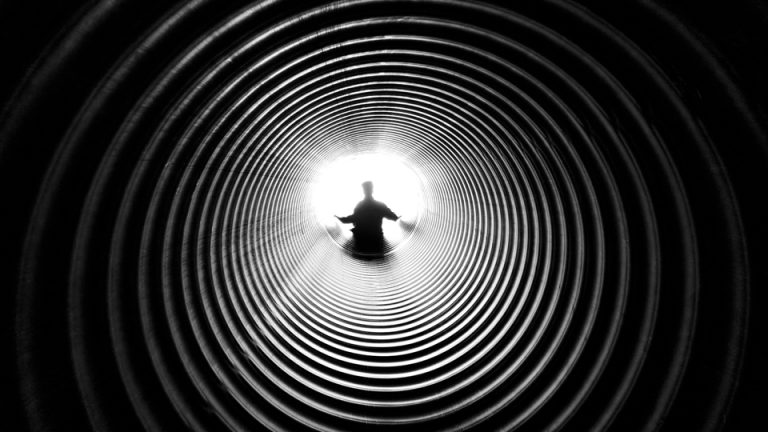
9 Monochrome Photography Tips (All You Need To Know for Black and White Photos)
Have You ever Wondered Why Monochrome Photography Never Gets Out of Style? Here’s Why. Today, we will share with you some tips on how to make better monochrome and black and white photos. Hopefully,these practical tips will serve you well in your interest towards monochrome photography. 1. Shoot with High Contrast in The Black and…

Still Life Photography: It’s More Than Just a Bowl of Fruit!
Hoping to try your hand at Still Life photography? With so many styles and genres of photography, there is none as versatile as Still Life. It gives the photographer the most creative freedom, as you control all aspects of the image from composition, lighting to the subject matter. It is also one of the best…
![picture essay pdf Getting Started with Light Painting [Beginners Guide]](https://colesclassroom.com/wp-content/uploads/2020/05/asphalt-blur-car-city-290470-768x512.jpg)
Getting Started with Light Painting [Beginners Guide]
The word photography translates from Greek to “drawing with light.” Why not have some literal fun by experimenting with light painting? Break out your camera, a light source, and your tripod, and let’s explore using light as a brush and the world as your canvas with light painting! In this article, we’ll cover what light…
Jump to navigation
- Inside Writing
- Teacher's Guides
- Student Models
- Writing Topics
- Minilessons
- Shopping Cart
- Inside Grammar
- Grammar Adventures
- CCSS Correlations
- Infographics
Get a free Grammar Adventure! Choose a single Adventure and add coupon code ADVENTURE during checkout. (All-Adventure licenses aren’t included.)
Sign up or login to use the bookmarking feature.
- 33 Writing Photo Essays
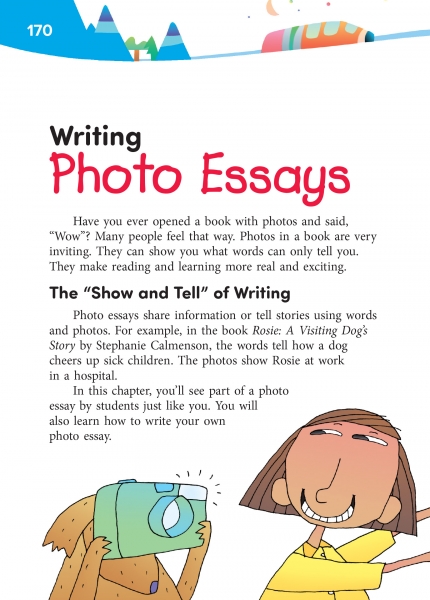
Start-Up Activity
Share appropriate magazines that include photos and text, such as National Geographic or Life . Have students page through the magazines, looking for photos that draw their attention. Ask what they like about the photos. Ask what they can learn from the photos. Ask them to close their eyes and imagine the magazine with no photos, just words.
Lead a discussion about the power of pictures. Help students understand that when they connect words and photos, they can reach their audience in all new ways.
Think About It
“We try to grab pieces of our lives as they speed past us. Photographs freeze those pieces and help us remember how we were.”
—Gene McSweeney
State Standards Covered in This Chapter
- CCSS.ELA-LITERACY.RI.6.1
- CCSS.ELA-LITERACY.RI.6.2
- CCSS.ELA-LITERACY.RI.6.3
- CCSS.ELA-LITERACY.RI.6.7
- CCSS.ELA-LITERACY.W.6.2
- CCSS.ELA-LITERACY.W.6.2.A
- CCSS.ELA-LITERACY.W.6.2.B
- CCSS.ELA-LITERACY.W.6.4
- CCSS.ELA-LITERACY.W.6.5
- CCSS.ELA-LITERACY.W.6.7
- CCSS.ELA-LITERACY.W.6.2.C
- CCSS.ELA-LITERACY.W.6.2.D
- CCSS.ELA-LITERACY.W.6.2.E
- CCSS.ELA-LITERACY.W.6.2.F
- CCSS.ELA-LITERACY.W.6.6
LAFS Covered in This Chapter
Lafs.6.ri.1.1, lafs.6.ri.1.2, lafs.6.ri.1.3, lafs.6.ri.3.7, lafs.6.w.1.2, lafs.6.w.2.4, lafs.6.w.2.5, lafs.6.w.3.7, lafs.6.w.2.6, teks covered in this chapter, 110.22.b.5.f, 110.22.b.8.d, 110.22.b.8.d.i, 110.22.b.6.d, 110.22.b.8.d.iii, 110.22.b.8.f, 110.22.b.10, 110.22.b.11.b, 110.22.b.10.a, 110.22.b.10.b.i, 110.22.b.10.b.ii, 110.22.b.10.b, 110.22.b.10.c, 110.22.b.10.d, 110.22.b.12, 110.22.b.10.e, page 171 from write on track, sample photo essay.
Have volunteers read each paragraph of the sample photo essay. When a photo accompanies a paragraph, stop to discuss the photo. "How does the photo make the ideas clearer?" "What is the photo doing that the text can't do?" Point out to students that each photo must be carefully chosen and positioned, just as the words are carefully chosen and positioned.
Related Resource Tags
Click to view a list of tags that tie into other resources on our site
Page 172 from Write on Track
Ask for a student volunteer to read the paragraph in the middle of the photo essay.
Then ask for other volunteers to describe "what the photo shows you." Help students understand that they can learn a great deal from a photo.
Page 173 from Write on Track
Have a volunteer read the paragraph. Then lead a discussion about what they see. Ask students what the photos are doing that words alone can't do.
Then have a volunteer read the last part of the essay.
Page 174 from Write on Track
Writing a photo essay.
Have your students list interesting people they know who have jobs or hobbies that other students would like to find out about. Students then should pick a topic.
Lead students through the next two sets of tips, having them research their topics and collect photos. If they know the person, they may want to interview him or her and take pictures. If they don't know the person, they may need to do research in books and online.
At the bottom of the page, remind students that the photos they include shouldn't just be "for show." They should communicate ideas that words can't express.
Page 175 from Write on Track
Writing, revising, and editing.
After students have gathered information and images for their photo essays, lead them through "Writing a Draft." Then give them time to put their first drafts together.
When the time comes to revise, have students use the questions under "Revising" to improve their work. Also, have peer readers use these questions to suggest improvements.
After revising, have students check for spelling, capitalization, and punctuation errors.
- 01 Understanding Writing
- 02 One Writer's Process
- 03 Qualities of Writing
- 04 Selecting a Topic
- 05 Collecting Details
- 06 Writing a First Draft
- 07 Revising and Editing
- 08 Publishing Your Writing
- 09 Writing Basic Sentences
- 10 Combining Sentences
- 11 Writing Paragraphs
- 12 Understanding Text Structures
- 13 Writing in Journals and Logs
- 14 Writing Lists
- 15 Making Albums
- 16 Writing Notes and Emails
- 17 Writing Friendly Letters
- 18 Writing Personal Narratives
- 19 Writing Family Stories
- 20 Writing Realistic Stories
- 21 Writing Time-Travel Fantasies
- 22 Writing Tall Tales
- 23 Writing Alphabet Books
- 24 How-To Writing
- 25 Writing Information Essays
- 26 Writing Newspaper Stories
- 27 Writing Persuasive Essays
- 28 Writing Opinion Letters
- 29 Writing Book Reviews
- 30 Making Bookmarks
- 31 Writing Classroom Reports
- 32 Writing Summaries
- 34 Writing Free-Verse Poetry
- 35 Traditional and Playful Poetry
- 36 Writing Plays
- 37 Using the Library
- 38 Using Technology
- 39 Reading to Understand Fiction
- 40 Reading to Understand Nonfiction
- 41 Reading Graphics
- 42 Reading New Words
- 43 Building Vocabulary Skills
- 44 Using Prefixes, Suffixes, Roots
- 45 Becoming a Better Speller
- 46 Learning to View
- 47 Giving Speeches
- 48 Performing Poems
- 49 Telling Stories
- 50 Learning to Interview
- 51 Listening to Learn
- 52 Using Graphic Organizers
- 53 Thinking Clearly
- 54 Thinking Creatively
- 55 Completing Assignments
- 56 Working in Groups
- 57 Taking Tests
- 58 Proofreader's Guide
- 59 Student Almanac
Academia.edu no longer supports Internet Explorer.
To browse Academia.edu and the wider internet faster and more securely, please take a few seconds to upgrade your browser .
Enter the email address you signed up with and we'll email you a reset link.
- We're Hiring!
- Help Center

Photo essays and photographs in visual arts-based educational research

Photographs are often used in educational research, particularly studies using visual arts research methodologies. The visual and conceptual relationships established between the pictures themselves in a research report are decisive for scientific and artistic quality. We recommend the use of concepts such as ‘photo series’, ‘photo essay’, ‘photographic discourse’, ‘photo abstract’, ‘photo conclusion’ and ‘photographic quotation’. Each concept fulfils a different function and value as a specific research criterion. The article offers definitions of some of these concepts and shows photographic portraits made by students in the primary teacher education department at the University of Granada, drawing on the work of Lewis Hine.
Related Papers
Mesías Lema, J. M., & Ramon, R. (2021). La fotografía en la investigación educativa basada en las artes / Photography in educational research based on the arts. IJABER International Journal of Arts-based Educational Research, 1(1), 7-22.
Ricard Ramon , JOSE MARIA MESIAS-LEMA
This article discusses the use of photography as a pedagogical artefact and documentation tool for Arts-based Educational Research. Its implementation is accomplished through the collaborative project "Ways to make worlds", developed by two Spanish universities. This project delves into the educational discourses, methodologies and thinking through performative actions using photography. These actions constitute a means of subverting the classroom and reflecting on it, above all, by focusing on the initial training of teachers in the visual arts. The results of the actions allow us to visualize the spaces of reflection and analysis that the participants develop with their own bodies, acquiring a new way of thinking and offering an instrument of artistic action to engage educationally in their future classrooms.
Mirian Celeste Martins , Rita Demarchi , olga egas
Photo-essays were born as ways of thinking, investigating and arguing, inserted in researches master and doctorate researches. The dimension of poiesis in the authors' thinking and making photo-essays that were not initially thought to be exposed break the frontiers of academia and gain the space of cultural institutions. Thus, they were exhibited at the Historical and Cultural Center of the Mackenzie Presbyterian University (São Paulo, 2016) and at the Museum of Image and Sound / MIS (Campinas, 2017). In the first, Rita Demarchi's photo-essays enter the spaces of art exhibitions to "see who sees", Vanessa Galvani presents new lenses for the teacher and Olga Egas, highlights the use of photography as a power of invention in teaching future teachers. In MIS, they are amplified with photo-essays by Estela Bonci provoking the forgotten trait of students of Pedagogy course; Stela Aguillera presents the experience at the course Youth and Adult Education during and after the visit to the 32nd São Paulo Art Bienal; Débora Rosa at the same Bienal, accompanying visits from educators, subjects of her research and Filippa Jorge focuses children and contemporary art. Both the research and the experience of creating the exhibits allow reflections on some of the possible processes and spaces of these ways of doing / thinking research. Visual Abstract Image 1. Rita Demarchi. Spaces, silences, meetings, 2018. CHCMackenzie and MIS/Campinas. Overview, pairs of images consisting of four digital photographs from Martins, Areias and the author.,
Mirian Celeste Martins , olga egas
What kind of knowledge is being produced and how it can be discussed? Considering that "art is about doing at the same time as one creates what to do and how to do it" as Pareyson (1984, p. 32) says; we ask in what sense does the photo-essay work as a trigger of thinking and as a way to build knowledge. Is it possible to understand how this process occurs? In this essay, we are interested in analyzing how images are configured as triggers for thought and knowledge, which is itself magnified by the very production of images. This analysis led to researches that are not restricted to artists or to artistic research (AR), but are driven by the poiesis of the researcher in art, education and culture, as it was argued in our last presentation at the 2nd Conference in Granada 2014. Our purpose in this present essay is to focus especially on the use of photo-essays as an artistic research methodology, with reference to the studies of Joaquin Roldán and Ricardo Marin-Viadel (2012) and also to our own practice at the post graduate program of Education, Art and Cultural History of Mackenzie University (São Paulo, Brazil). Rita Demarchi photographs series that integrate her doctoral research about museums and cultural institutions, showing a careful process of registering silence and lurking in the universe that surrounds the connoisseur, the works of art and exhibition spaces. This way of capturing situations requests a constant openness to the phenomena which is one of the characteristics of artistic creation. The images are legitimized as they are a full demonstration of how images are able to trigger our thinking and produce connections between theoretical research and writing. The curatorial work of going over the pictures taken, selecting them and assembling them into photo-essays has allowed Rita to go beyond the thought about art and led her to an unveiling of relationships and issues about the complexity of the territory concerned, which as we think, would not come to light otherwise. Olga Egas promotes personal and collective student’s productions as well as cultural expeditions that together compose photo-essays of shared experiences and instigate aesthetic sensibility on these future teachers. Her doctoral research aims to use photo-essays as a way to keep the students and the teacher in a state of attention and invention and enable the construction of subjectivities. She also aims to investigate how photo-essay may constitute as a device to read and interpret the world and recreate other practices to handle the objects and events that we believe are an indispensable condition to the practice of any teacher. We present a brief analysis of these photo-essays and processes that involve the attempt to improve the understanding of ABR and reflect on the plural forms and the consequent expansion of ways to produce and disseminate knowledge. A new way to produce, organize and disseminate research and knowledge, which challenges the traditional and legitimized way of being in the academy. Keywords: Art based research, photo-essay, research methodologies, art.
Proceedings
Serena Triacca
Rafael Marfil-Carmona
The present research study deepen knowledge on the viewpoints of future primary education teaching professionals regarding issues associated with the educational system and its creative capacity. A study was carried out with 216 students undertaking the Primary Teaching Degree of the University of Granada. Participants were required to develop a conceptual photograph which reflected their thoughts regarding weaknesses of the educational system. The resultant pieces served as a research tool following the performance of formal and content analysis. The future teachers identify weaknesses classified in two broad spheres. The first refers to issues of a political or institutional nature which affect education at a general level. The second refers to teaching methods and education at a more localised or specific level. This is a line of work in art education that serves to stimulate a critical view of the educational system in the training of future teachers.
Springer eBooks
Laura Rayón Rumayor
Visually Provoking
Ricardo Marin-Viadel , Rafaèle Genet
The purpose of this chapter is to explore the potential of photographic-based research techniques in educational studies: Visual Quotations and their uses in Photo Series and Visual Average. The visual information is presented through nine figures from two PhD dissertations carried out at the University of Granada (Spain) in which digital color photographs were the main research technique. One dissertation explores the concept of visual identity of university students while comparing similarities and differences depending on professional perspectives such as lawyer, sportsman, economist , professor, and so on (Molinet-Medina, 2016). The second dissertation analyzes how future primary teachers and social educators comprehend urban planning among middle and lower working-class neighborhoods , in order to better understand how to interact with people who live in that environment (Genet-Verney, 2016). Both research projects combine photos made by the researcher and photos made by people engaged in the research process. Participants in both projects were students from the University of Granada, mainly from the Faculty of Education and Teacher Training. For the purposes of this chapter we are interested in highlighting the qualities of the photographic techniques for educational research.
Carolyn Jongeward
International Journal of Art & Design Education
RICHARD HICKMAN
RELATED PAPERS
SIR - Servizio Informazione Religiosa della CEI - DIrettore Domenico delle Foglie, 21 luglio 2016.
Matteo Calisi
Sebastian Iglesias-Osores
Andrew J Parkes
Proceedings of the Fifth International Conference on Security of Information and Networks - SIN '12
Dhruba Kr Bhattacharyya
Carlos Humberto Monsalve López
2014 12th International Conference on Frontiers of Information Technology
M Usman Asad
Colloids and Surfaces A: Physicochemical and Engineering Aspects
Akbar Mehdilo
Aman Ullah Khan
X-Ray, Optical, and Infrared Detectors for Astronomy IX
Prajjwal Singh
American Journal of Applied Sciences
Abdulsalam Abubakar
Presse médicale (Paris, France : 1983)
Stéphane de RUDNICKI
2015 Computing in Cardiology Conference (CinC)
Nayeefa Chowdhury
Open Journal of Modern Linguistics
Seibutsu Butsuri
Takato Sato
Biodiversitas Journal of Biological Diversity
Silvera Devi
Systems Research and Behavioral Science
Dimitris Michailakis
Suneel Kalla
Political Research Quarterly
Rachel VanSickle-Ward
Geochimica et Cosmochimica Acta
Frank Tomaschek
Acta Orthopaedica
Ola Rolfson
Cumhuriyeti Anılarla Okumak: Yüzyılın Anıları
E.Zeynep Suda (Güler) , hande tatoglu
Ittai Muller
Physical Review Letters
Alessandro LANZA
Keith Casper
RELATED TOPICS
- We're Hiring!
- Help Center
- Find new research papers in:
- Health Sciences
- Earth Sciences
- Cognitive Science
- Mathematics
- Computer Science
- Academia ©2024
- TV & radio
- Art & design
The Guardian picture essay

The origin of all things: Kyotographie 2024 – a photo essay

Juliette Pavy: Sony World Photographer of the Year 2024

In Maryland, female migrant laborers face an uncertain future as sea levels rise – photo essay

Jump for joy! How cheerleading conquered the world, from Lagos to Ho Chi Minh City

A WHO photographer in Gaza: ‘There’s just an overwhelming need for peace’
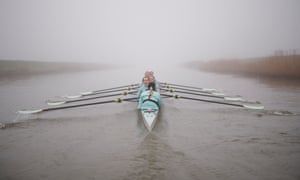
Pulling together: how Cambridge came to dominate the Boat Race – a photo essay

The labour of fruits: night-time in New Covent Garden market – a photo essay

‘My focus is survival’: how rising costs are hitting independent restaurants
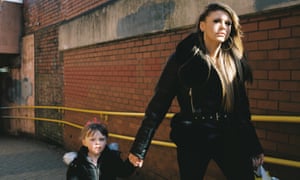
‘It’s greed, that’s what it’s about’: documenting the UK’s cost of living crisis – photo essay

Mi Perro: Prisoners and their dogs in Latin America – a photo essay
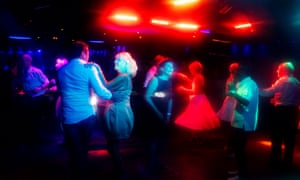
France’s tea dancers defy stereotypes of older age – photo essay

Ali Smith’s 90s New York punk scene – photo essay
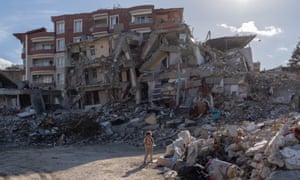
Rights and freedom A year in the aftermath of Turkey’s earthquake – a photo essay

‘I accept myself for who I am’: people at 40 on what life has taught them so far
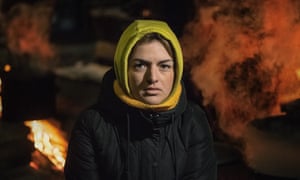
Resilience and bravery in Ukraine: PhotoBrussels festival 2024

Bangladesh: the adoption crisis ‘I was told I could visit. Then she went missing’: the Bangladeshi mothers who say their children were adopted without consent

‘I dreamed of blocky pixels’: the strange, sweaty, sociable early days of gaming – in pictures
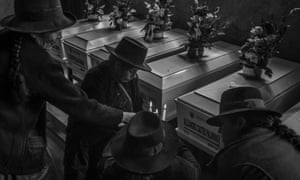
Decades after the country’s internal conflict, Peruvians lay murdered family members to rest – a photo essay
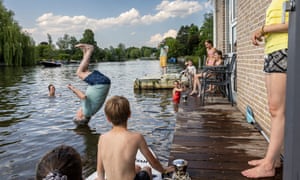
‘I feel so young, so full of life’: being 72 around the world – photo essay

Flights of fancy (dress) at Ally Pally – photo essay
- Photography

10 free picture description worksheets
Printable picture description worksheets.
Here are 10 free printable picture description worksheets downloadable in PDF form. The images are a combination of interesting photographs and beautiful surreal/fantasy artwork.
The sheets have been designed as writing tasks but there is no reason why you can’t project the images and get your students to describe them orally.
There is a lot to describe in each picture which is great for students. A short list of suggested vocabulary has also been added to each worksheet to help your class get started.
These activities are great for learning new vocabulary, practicing prepositions of place, and forming grammatically correct sentences.

Preparing your students for describing pictures
First of all, it is a good idea to get your class familiar with different parts of a photograph. Words such as foreground, background, center, in the distance, left, right, top, bottom, and corners are essential for this.
Draw a rectangle on the board with some basic pictures and label these different areas. It is also handy to leave it on the board so they can use it for reference when doing their own picture descriptions.
Hopefully, your students are already quite competent with prepositions of place but if they are not there are some suitable worksheets to practice this here .
Next, check the suggested vocabulary on the worksheets and make sure they know these words. Be sure to add more vocabulary where you see fit.
Finally, do a demonstration and describe a picture yourself for the class to see. This way they know clearly what their objectives are.
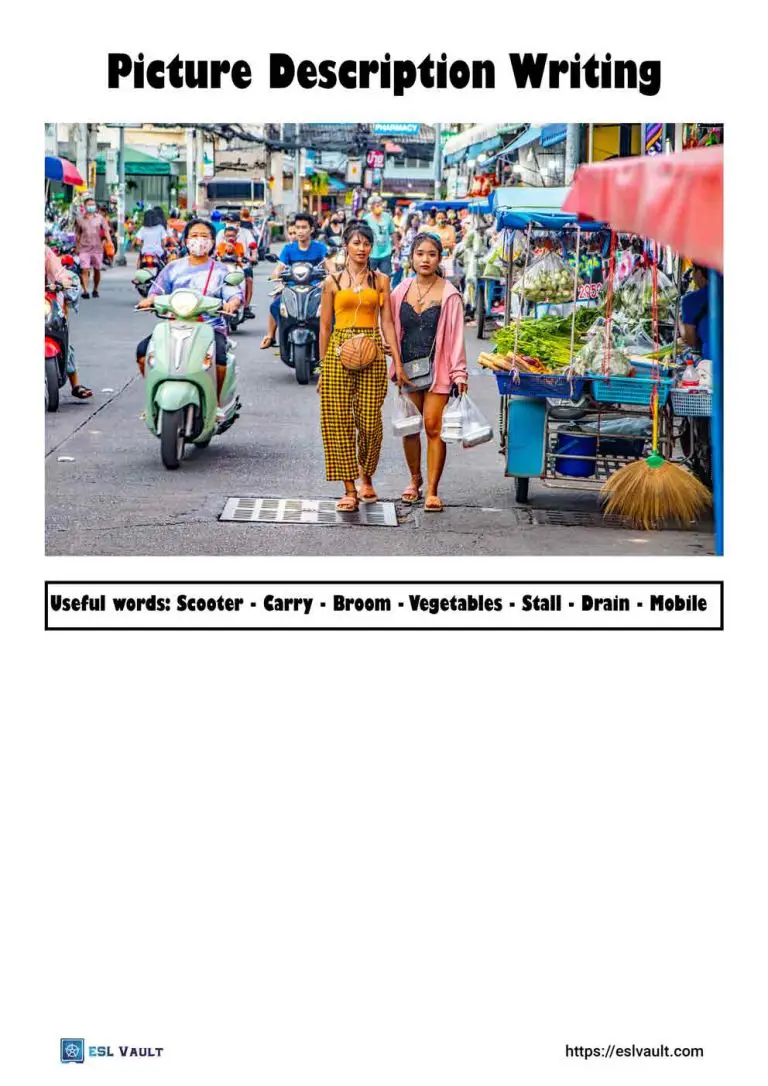
Completing the task
Once your students have finished their picture description worksheets it is time to check what they wrote. This is the time to correct and grammar or punctuation errors.
It is also often a good idea to get them to read their descriptions aloud to also get in some speaking and pronunciation practice during the class.

Further related activities
A fun activity to follow up with is the pair work drawing activities which also require describing pictures with the added excitement of listening and drawing.
For more pair work on the topic of prepositions, have a look at the prepositions drawing worksheets .
You might also like these
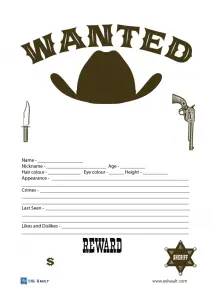
A wanted poster – Kids writing activity

7 free printable blank comic book pages

3 free inventions writing activity worksheets
Free ESL and English teaching resources, no sign up required. Just find what you like, download it and head to class!
Privacy Policy
Share ESL Vault with your friends!
- Writing Worksheets
- Vocabulary Worksheets
- Pronunciation
- Kids worksheets
- Idioms and Expressions
- ESL Puzzles
- ESL Pair Work Activities
- ESL Conversation Questions
- Coloring Pages
- Articles, Lists and Ideas
- Art and Craft Activities
Advertisement
How the House Voted on Foreign Aid to Ukraine, Israel and Taiwan
By Catie Edmondson , Martín González Gómez , Kayla Guo , Robert Jimison , Albert Sun and Karen Yourish
Votes on the Foreign Aid Bills
Source: Office of the Clerk, U.S. House of Representatives
The House passed a long-stalled foreign aid package on Saturday that gives funding to Ukraine, Israel and Taiwan, with a majority of lawmakers backing money for American allies across the globe. The package, which now goes to the Senate, is almost certain to become law.
The Senate passed similar legislation in February. But in the face of distinct bases of opposition to different elements of the legislation, which threatened to tank the package as a whole, Speaker Mike Johnson advanced the foreign aid using a convoluted strategy: It split the package into three parts, each of which received its own vote, added a fourth bill with Republican priorities as a sweetener and melded it all together again once everything passed.
The plan, laid out in a rule that passed on Friday, was concocted to capitalize on the pools of support for each part of the $95 billion package, while preventing opposition to any one piece from taking down all of them.
How Different Factions Voted
Note: Progressive Democrats are members of the House Progressive Caucus. Hard-right Republicans include members who were supported by the House Freedom Fund during the 2022 midterms, opposed Kevin McCarthy’s election as speaker in January 2023, or voted to oust Mr. McCarthy from the speakership last October. The fund is the campaign arm of the House Freedom Caucus, a hard-right faction founded in 2015.
A majority of Republicans voted against Ukraine aid on Saturday, in a reflection of the stiff resistance within the G.O.P. to continuing to aid Ukraine against President Vladimir V. Putin of Russia’s invasion. The coalition that voted against the bill extended from right-wing members of the House Freedom Caucus to leadership, such as Representative Elise Stefanik of New York, the No. 3 House Republican. On Israel aid, on the other hand, most Republicans voted “yes.”
Thirty-four right-wing Republicans also opposed aid to American allies in the Indo-Pacific, while Representative Rashida Tlaib, Democrat of Michigan, declined to take a yes-or-no position and voted “present.” Representative Bob Good, Republican of Virginia and the chair of the House Freedom Caucus, was one of the 21 members of his party who voted against the Israel package. Echoing one of the many grievances shared by hard-right Republicans who opposed all of the aid measures, Mr. Good said his support for “Israel’s right to defend itself remains unshakeable” but that he disagreed with a measure that would add to the nation’s debt.
While all Democrats voted in favor of aid to Ukraine and all but Ms. Tlaib supported funding to Taiwan, 37 left-leaning Democrats defected to vote against the Israel aid bill. They said before the vote that they opposed unfettered aid to Israel that could be used in its offensive in Gaza. The opposition to the Israel aid represented a minority of Democrats, but reflected the deep resistance to unconditional aid and the divisions in the party on Gaza. Representative Jamie Raskin of Maryland represented a notable new “no” vote among Democrats, and other standouts included Representatives Donald S. Beyer Jr. of Virginia, Earl Blumenauer of Oregon and John Garamendi of California.
Still, 37 “no” votes, while a break from Washington’s ironclad support for the Jewish state, fell short of the opposition bloc progressives had hoped to muster. Thirty-nine Democrats had voted “no” on Friday on the rule to allow the foreign aid package to come to the House floor, a target that progressives just missed on Saturday on the Israel bill. Fourteen of those Democrats voted on Saturday in favor of aid to Israel, while 12 Democrats who voted to allow the package on the floor on Friday then cast votes against the funding itself.
Twenty-five Republicans voted against the fourth bill, which included measures that could lead to a ban on TikTok in the United States and that would redirect funds from seized Russian assets to help aid Ukraine. Democrats put up a big vote — 174 — in favor of this bill, which was intended to sweeten the overall package for conservatives.
How Every Member Voted
An earlier version of this article incorrectly identified the political party of a group of representatives who notably voted “no” on new aid for Israel. They are Democrats, not Republicans.
- Share full article

IMAGES
VIDEO
COMMENTS
Decide how much time you are going to give to making the photographs and choose a deadline. After that date you will be making a final selection and post processing the images. Write out a list of the photos that you want to make in that time frame. Think and plan the lighting.
6. Include Captions or Text (Optional) Write captions to provide context, add depth, or explain the significance of each photo. Keep text concise and impactful, letting the images remain the focus. 7. Present Your Photo Essay. Choose a platform for presentation, whether online, in a gallery, or as a printed booklet.
3. Take your time. A great photo essay is not done in a few hours. You need to put in the time to research it, conceptualizing it, editing, etc. That's why I previously recommended following your passion because it takes a lot of dedication, and if you're not passionate about it - it's difficult to push through. 4.
5. Place Over Time. View the "At Home in the Ozarks" photo essay by Kylee Cole. If you want to document changes and show how the streets, buildings, and parks in your city change over time, select your favorite locations and start to visit them regularly to capture the way they look during different seasons. 6.
Many photo essays range from 8-12 images. But of course, it varies based on the essay. The number of images you have in your final photo essay is up to you. Remember, less is more. A photo essay is most powerful when each image deserves to be included. 6. Put your images in a purposeful order. Create a visual flow with your images.
Top 17 Photo Essay Examples. Here are some fantastic ideas to get you inspired to create your own photo essays! 17. Photograph a Protest. Protests tend to be lively events. You will find people standing, moving, and holding banners and signs. This is a great way to practice on a moving crowd.
Written by MasterClass. Last updated: Jun 7, 2021 • 5 min read. Photo essays tell a story in pictures, and there are many different ways to style your own photo essay. With a wide range of topics to explore, a photo essay can be thought-provoking, emotional, funny, unsettling, or all of the above, but mostly, they should be unforgettable.
Exploring the Picture Essay: Tips, Best Practices, and Examples. April 18, 2023. Words by Jeff Cardello. A picture essay lets you harness the power of images to tell stories, evoke emotions, and convey a sense of place, time, and perspective. Picture essays drop viewers right into the action, letting them see things through the camera's lens ...
Photo Essays. A photo essay is simply an essay that uses images to tell a story or make a point. In a photo essay, images are placed in a specific order in order to send a particular message to an audience. Some photo essays will have text to support the photos or provide details, but some photo essays will have no text at all.
A photographic essay is a set or series of photographs that are intended to tell a story or evoke a series of emotions in the viewer. It allows to tell more than what is possible with a single image Essays range from purely photographic projects to photographs with captions, small texts or full text essays
Yes, the essay has come full circle, echoing the opening image of the weasel's skull, but it also points away, beyond itself, to something yet to be realized. The ending both closes and opens at the same time. All diagrams rendered by Claire Bascom. An earlier version of this essay appeared in Volume I, issue 1 of The Essay Review.
Teaching the Photo Essay. A picture is worth 1,000 words. By We Are Teachers Staff. Sep 2, 2015. Your students, if they're anything like mine, love to communicate through images—photos on Instagram, GIFs shared in a text, photo stories on Snapchat. And yet, so much of our conversation in school revolves around words.
Famous Photo Essays. "The Great Depression" by Dorothea Lange - Shot and arranged in the 1930s, this famous photo essay still serves as a stark reminder of The Great Depression and Dust Bowl America. Beautifully photographed, the black and white images offer a bleak insight to one of the country's most difficult times.
A photo essay is a series of photographs selected to tell a story. Photo essays may contain text but generally allow the photographs, or rather the subjects depicted in the photographs, to tell the story. Photo essay assignments are usually focused on the curatorial process of selecting the best images to create an impactful sequence of images.
Writing, Revising, and Editing. After students have gathered information and images for their photo essays, lead them through "Writing a Draft." Then give them time to put their first drafts together. When the time comes to revise, have students use the questions under "Revising" to improve their work.
A photo essay may be accompanied by written text, but most importantly the critical content of the research is presented visually. Photo essays serve primarily to explain an argument because they exploit the rhetorical and narrative potential of images, not just their figurative or representational functions.
Write a short story, poem or memoir inspired by this illustration. Related Picture Prompt Glenn Harvey. Trapped Inside. Wilderness Wayfaring. Magical Chores. I'm Sorry. Dollar Bills. Dinosaurs ...
Photo Essay Rubric 5 4 3 2 1 Point(s) Central Idea There is one clear, well-focused topic. Central idea stands out and is strongly supported by the photographs and detailed content in the captions. A great deal was learned by reading and viewing the captions. Central idea is clear and is supported by the photos and content in the captions.
A year in the aftermath of Turkey's earthquake - a photo essay. Photographer David Lombeida has spent the last 12 months documenting five families as they recover from the immediate ...
When you write an essay for a course you are taking, you are being asked not only to create a product (the essay) but, more importantly, to go through a process of thinking more deeply about a question or problem related to the course. By writing about a source or collection of sources, you will have the chance to wrestle with some of the
101 Picture Prompts to Spark Super Writing pr♣ ♠ ☎ ♣ ♣ r p s ☎ r ♣♣♦s☎ ☎ r ☎ s rp s☎
The crowdedness of the room symbolizes the emotional discomfort felt by the disciples. Step 4: Discuss the emotional and mental responses incurred within the viewer. Ex. The tense and emotionally varied atmosphere upon the painted faces elicits curiosity and awe from the observer who may speculate about the exact context of the scene. Step 5 ...
DARE Essay Have you ever heard of DARE? If you're wondering what DARE stands for it stands for Drug Abuse Resistance Education. Those four simple words can really make a difference. It also stands for Define, Assess, Respond and Evaluate which is a decision making model that students learn within the program.
Printable picture description worksheets. Here are 10 free printable picture description worksheets downloadable in PDF form. The images are a combination of interesting photographs and beautiful surreal/fantasy artwork. The sheets have been designed as writing tasks but there is no reason why you can't project the images and get your ...
40 Unit 2 • Narrative Essays A narrative essay tells a story. In fact, narrative is another word for story. In this unit, you will learn how to organize and write a narrative essay. Even though the narrative essay has the same basic form as most other academic essays, it allows the writer to be a little more creative than academic
Guest Essay. An Octopus Took My Camera, and the Images Changed the Way I See the World. April 22, 2024. Credit... Maddie Fischer. Share full article. 584. By Craig Foster.
The House passed a long-stalled foreign aid package on Saturday that gives funding to Ukraine, Israel and Taiwan, with a majority of lawmakers backing money for American allies across the globe.